Overview
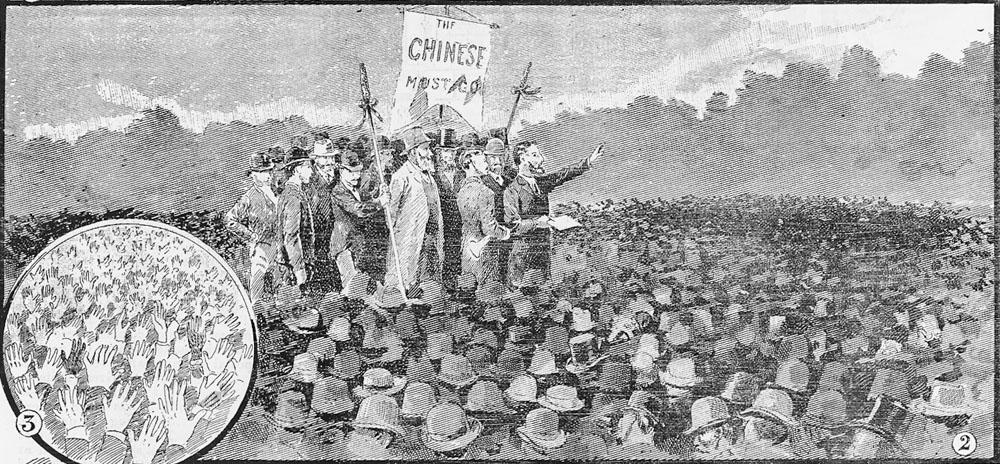
The year is 1901 and it’s time to celebrate. At long last Federation has arrived! The colonies are finally united to form the independent nation of Australia.
In Sydney, half a million people watch a five-mile federation parade wind its way through the city and out to Centennial Park. In Victoria, hundreds of thousands of Melburnians gather at the newly-built Citizen’s Arch waiting for the appearance of the Duke and Duchess of Cornwall.
But away from all the great processions in Sydney and Melbourne and the celebrations across the new country, there is one simmering issue that will not go away:
How do you solve the Chinese Question?
For nearly half a century now, there has been tension between the European and Chinese residents of the colonies. Occasionally, this ill feeling has boiled over into open hostility, as with the ‘Afghan Incident’ in 1888. This collection of sources will give you some idea of the tension.
Get organised

You are a member of a small committee in 1901 that has been established to examine the ‘Chinese Question’. Your task is to produce a report (in the form of a website) that examines the impact of Chinese migration to Australia in the nineteenth century. Unlike many Australians living at the beginning of the twentieth century, your committee is to closely examine the available sources and then base your conclusions on the evidence provided. In other words, ignore the often-hysterical and/or racist opinions of this time.
There should be three or four people in your group. Set up a Google document with these sub-headings:
-
Reasons for migration
-
Chinese at work
-
Criticisms of the Chinese
-
Conclusions and recommendations
You have already looked at some primary sources and in the ‘investigate’ section you will examine a lot more. Divide the sources between the group and all members are to make notes in a shared Google document. Set a time limit, maybe, two 40-minute periods plus homework.
Assign roles for each member of the group:
-
Main writer: this person refers to the notes made by the group and writes most, or all of the online content.
-
Google Sites expert: this person needs to familiarise him/herself with how the Google sites template works, be responsible for site design and advise other group members, especially the graphic designer. If you are new to Google Sites, this beginner’s guide will be helpful. The Google G Suite Learning Center also has tutorials to help get started with Sites.
-
Graphic designer: this person needs to choose all the appropriate images/primary sources to be used as well as accurately sourcing and acknowledging all items used, and ensuring that the writer refers to these items.
* All team members should consult with each other as roles will overlap.
Additional roles:
-
Second writer, who would do some of the writing along with the main writer
-
Editor, who would not be one of the writers. This person can bring a fresh perspective to what has been written.

A large range of sources have been gathered to assist your group in compiling its report. These include letters, photos, leaflets, cartoons, contracts, sketches, items and extracts. They have been organised into different categories (tabs). Examine the sources and make notes in your group’s Google doc.
As you are being asked to weigh up the positives and negatives of Chinese migration. Make a table in a Google doc to help organise and share your thoughts.
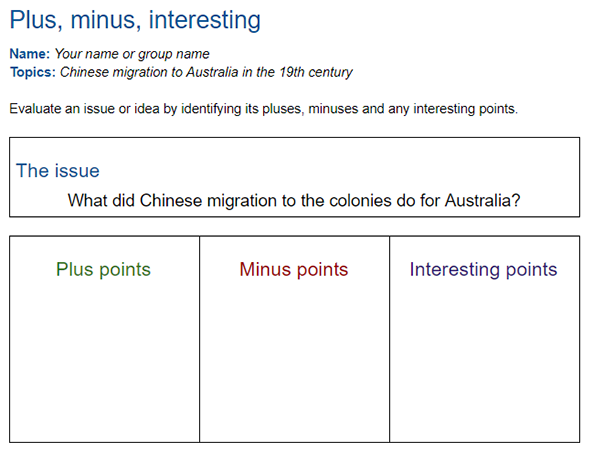
As you examine the sources, here are some questions you might ask yourself:
-
What factors encouraged the Chinese to come to the colonies, and where did they come from?
-
How has their contribution ‘value added’ to the colonies?
-
Have there been any problems with, or criticisms of Chinese migrants, and if so, do these outweigh their positive impact?
-
Are any criticisms legitimate, or are there other factors involved?
-
Have there been successful Chinese migrants in the colony, and if so how were these individuals different?
-
If there is any hostility between the Chinese and Europeans, and can you suggest ways to resolve these conflicts?
Now it’s time to go right back to the beginning of the twentieth century and examine the sources.
Investigate
Many of the Chinese migrants have come from the same part of China.
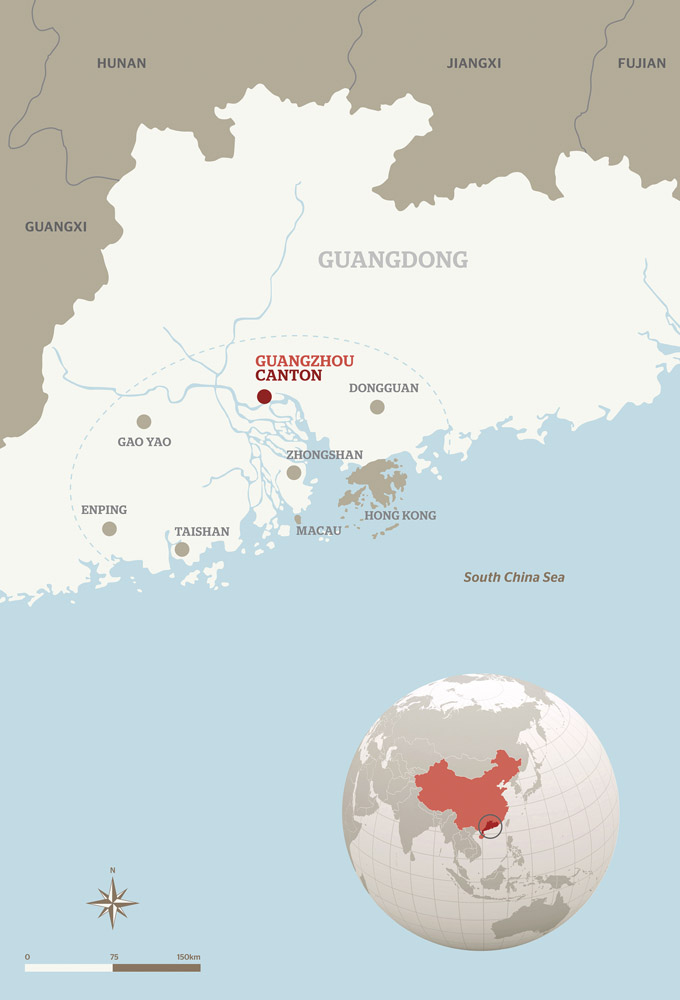
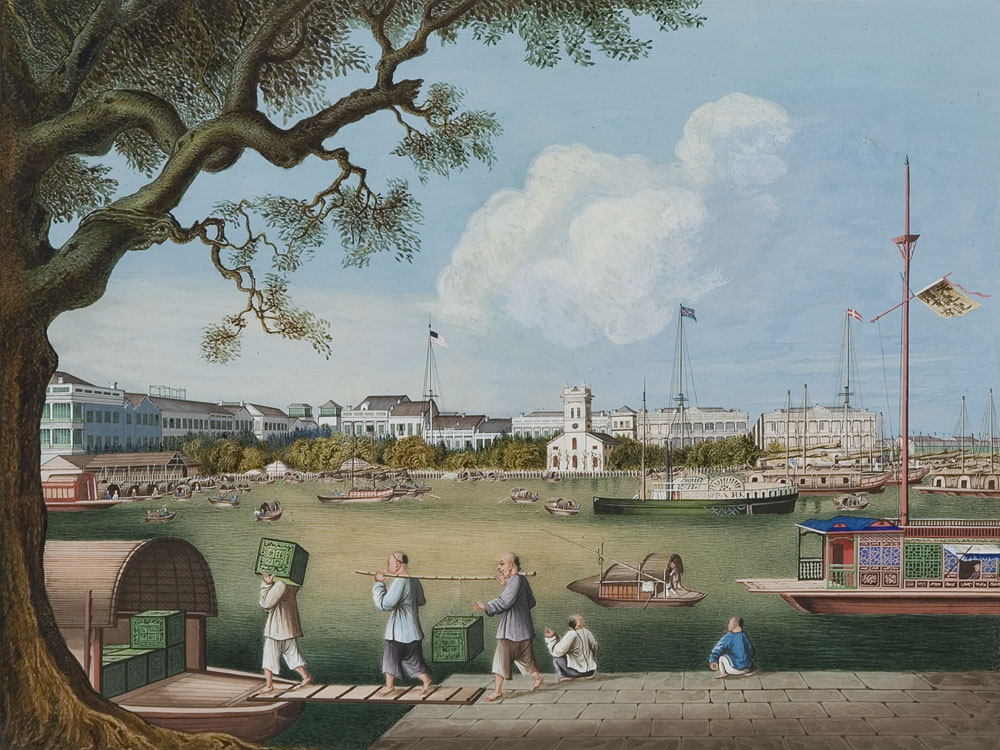
The Chinese Question compares life in China to living in Australia.
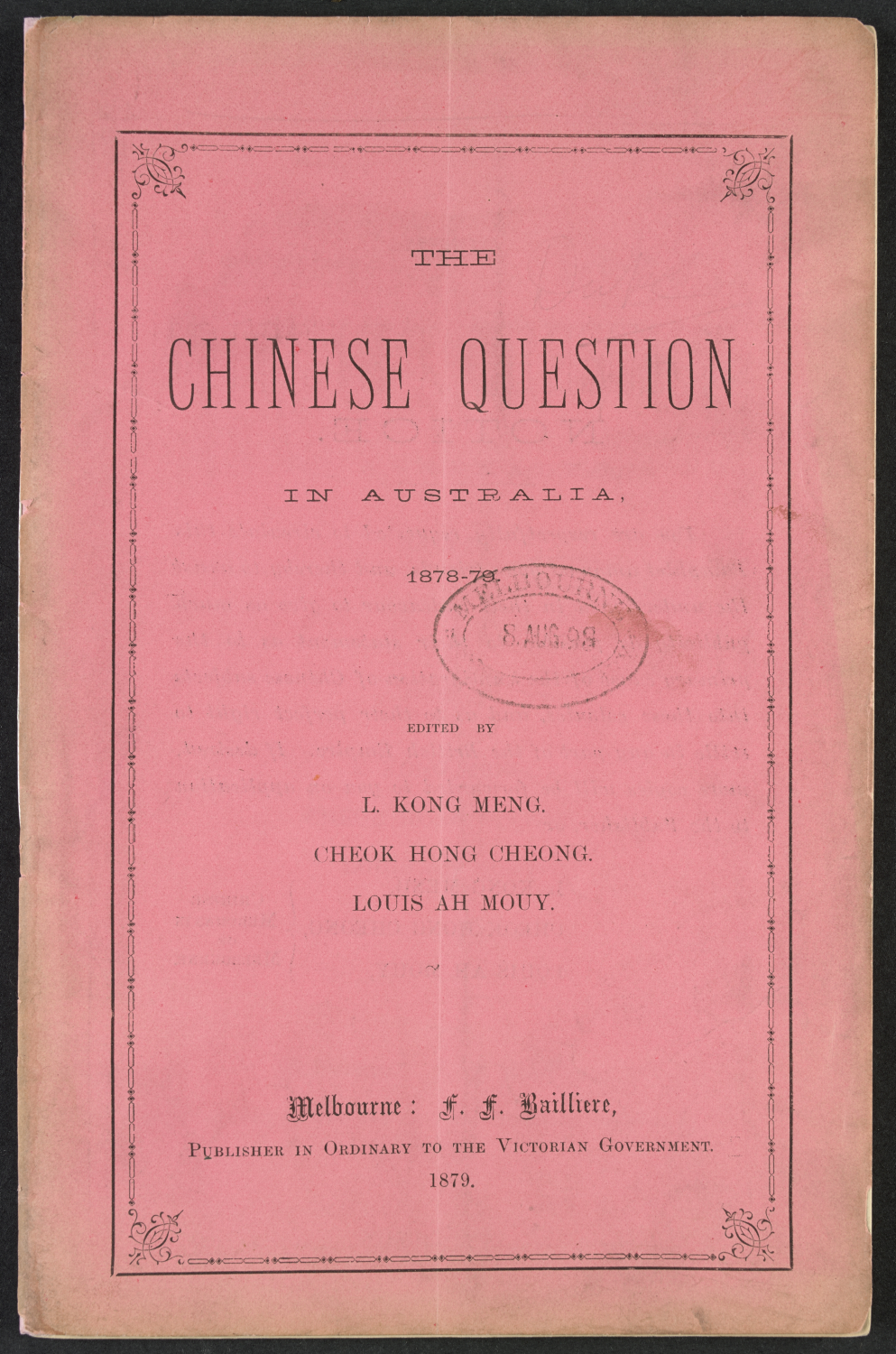
The next two sources are scenes from the gold fields.
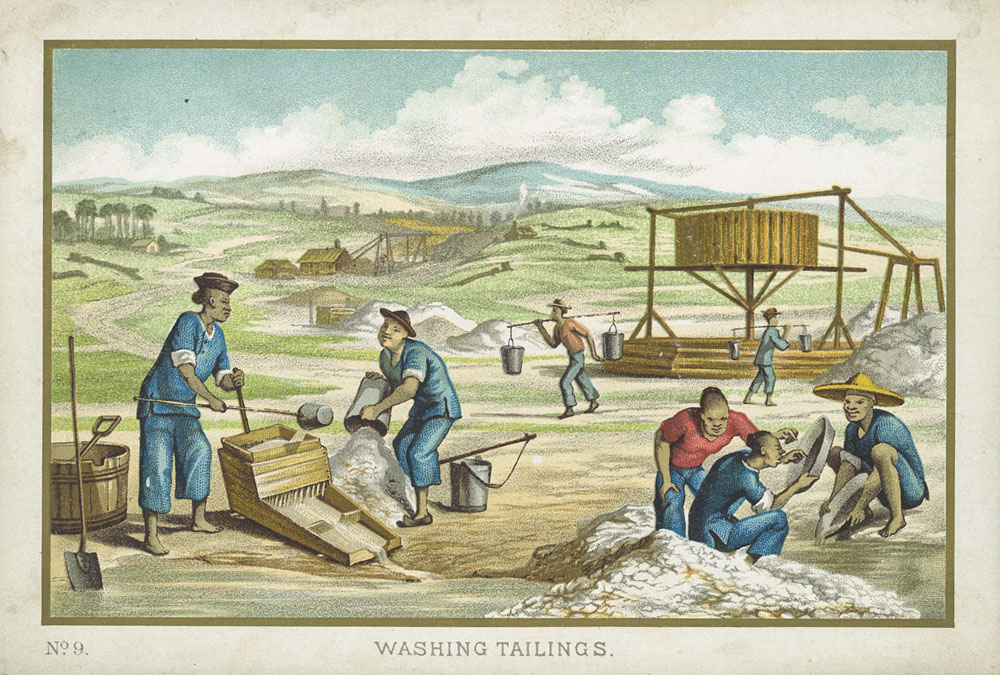
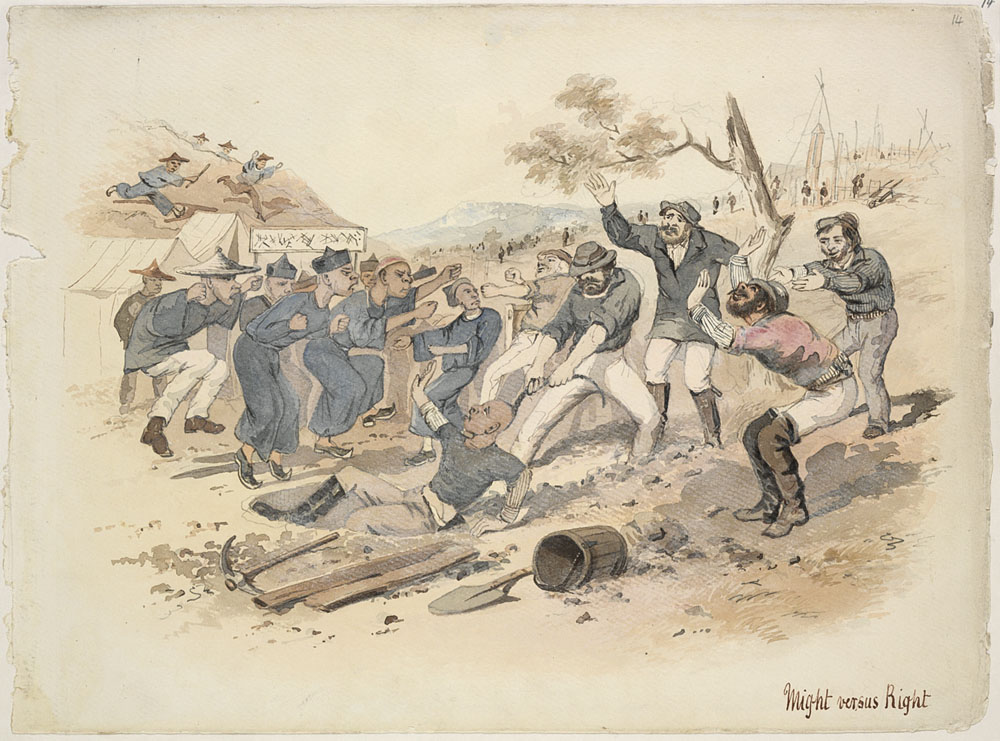
Not every Chinese migrant has come to the colonies seeking gold.
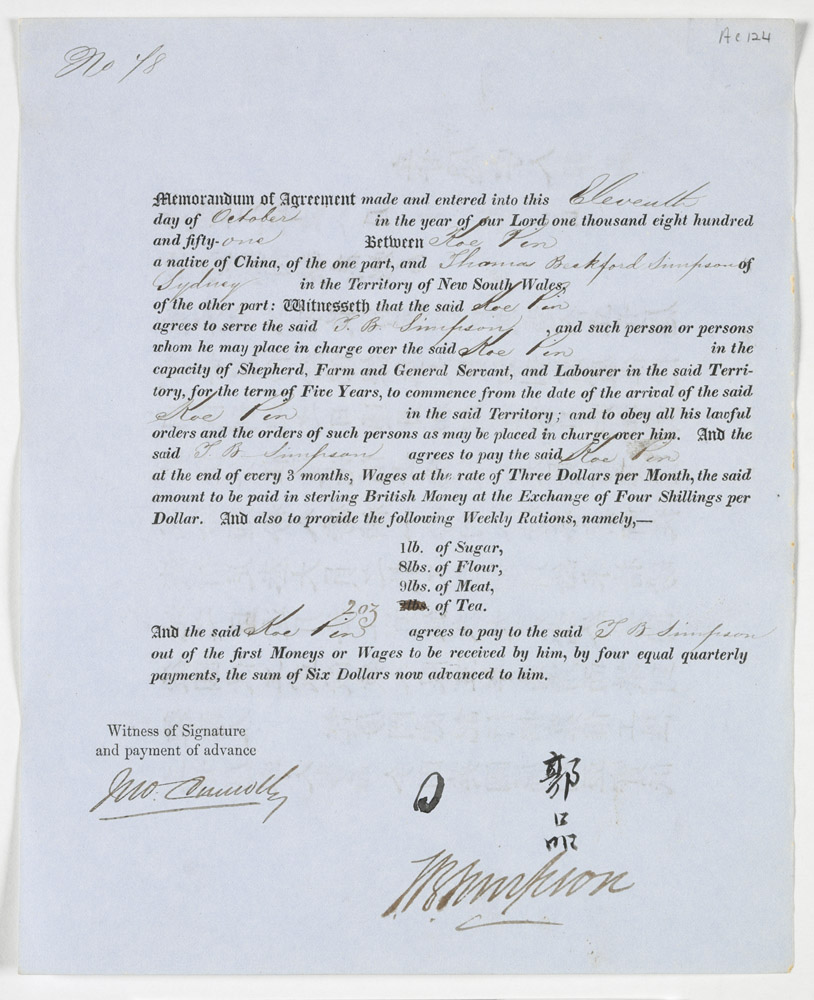
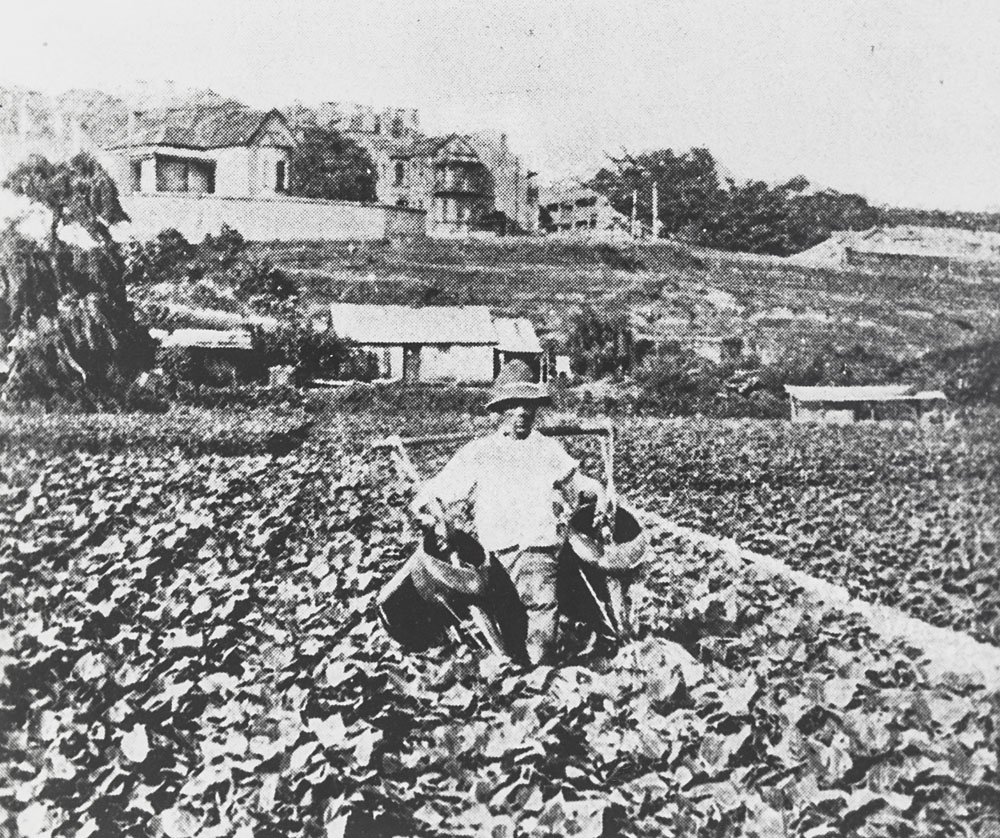
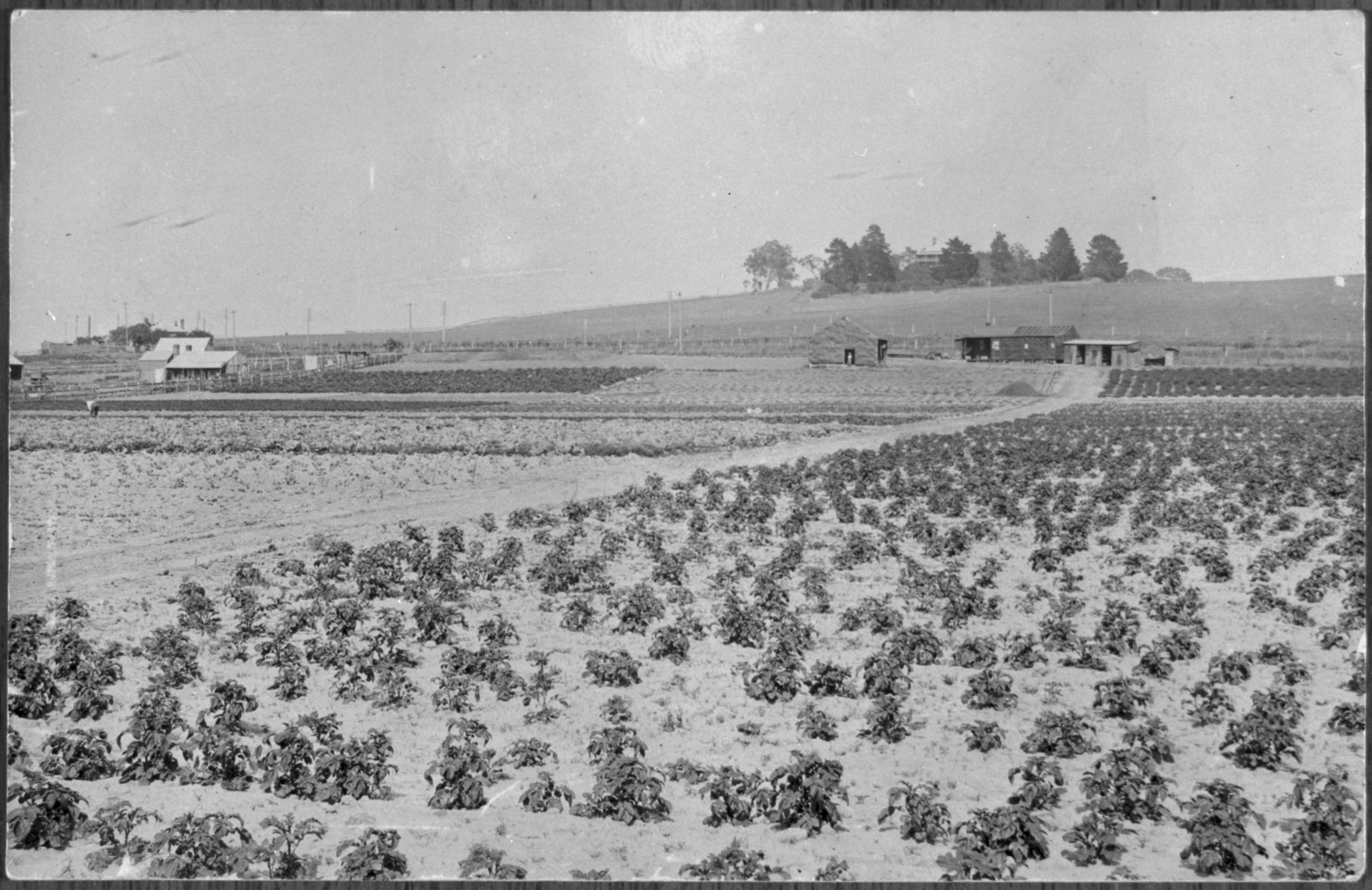
Read what the authors of The Chinese Question had to say about market gardening in the colonies.

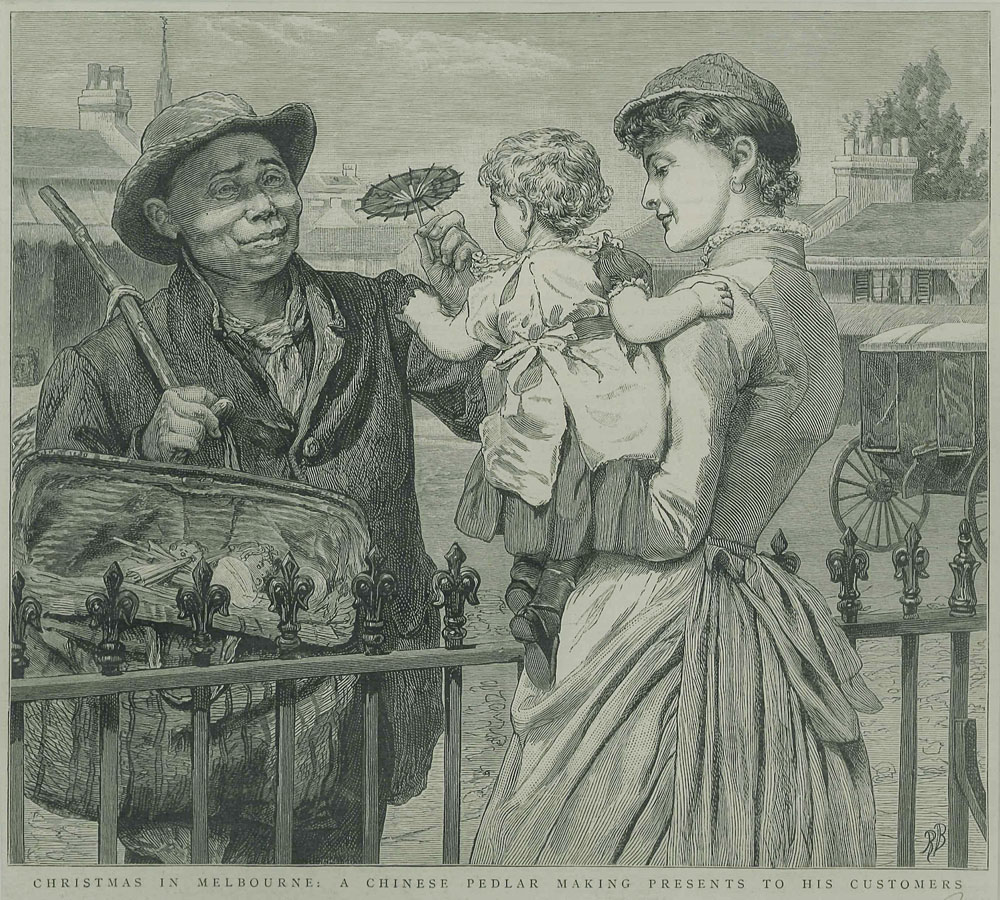
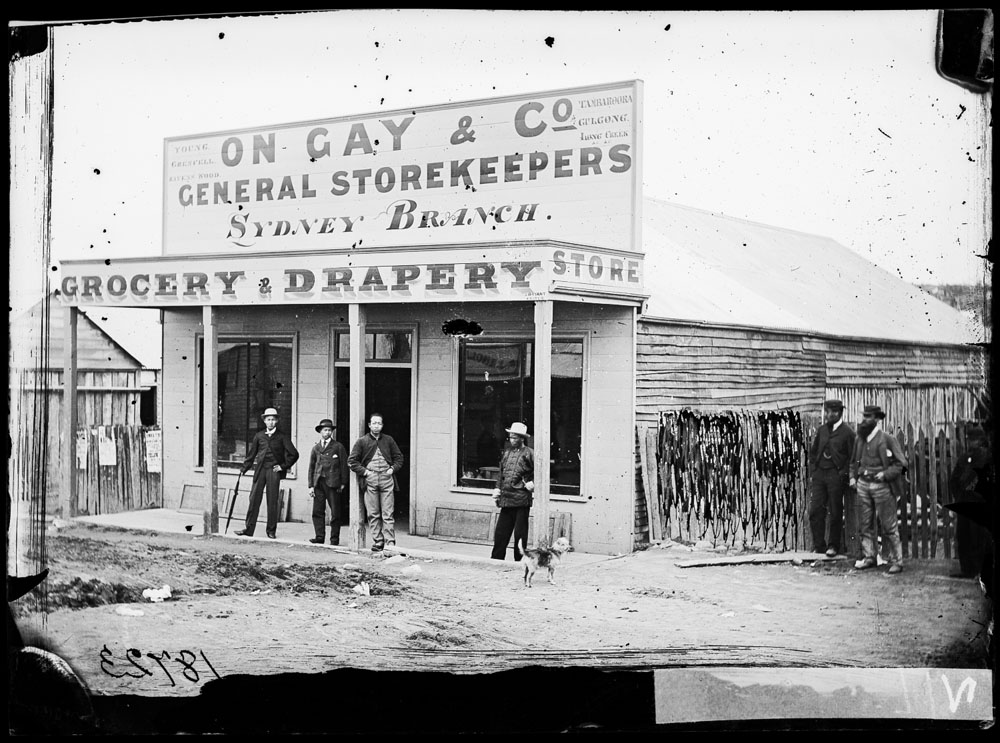
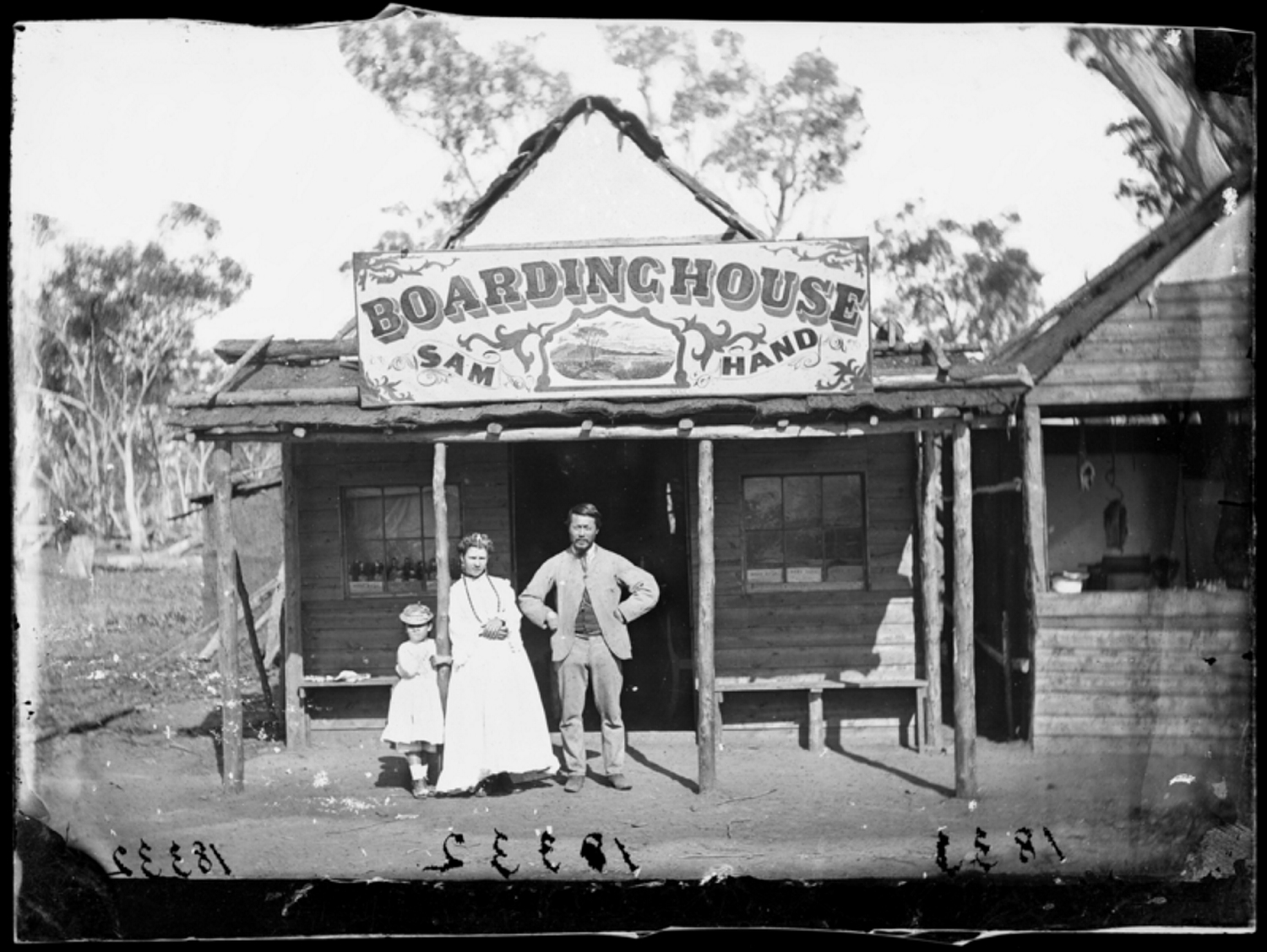
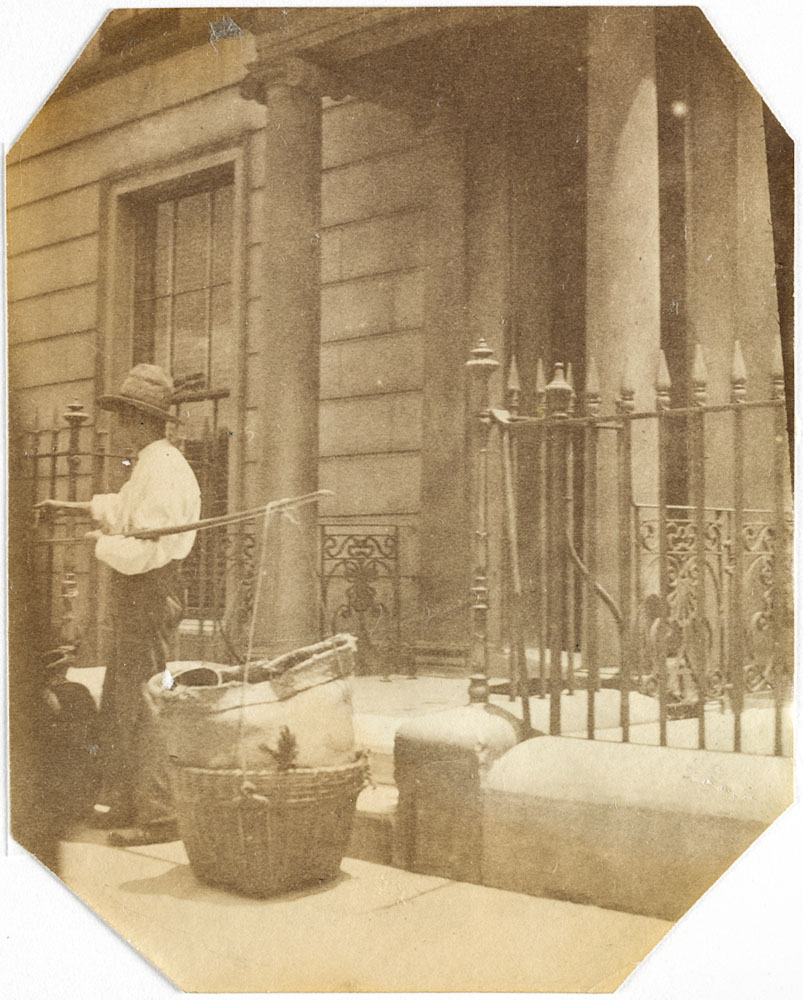
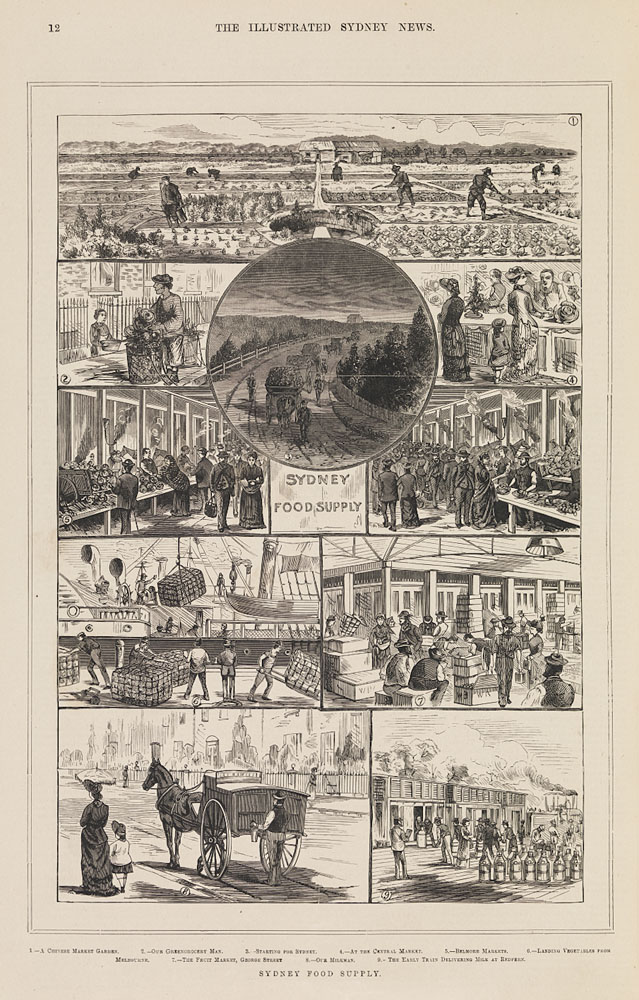
This is a letter about Charlie Hing, written by Inspector Donahue of the Gladesville Police Station.
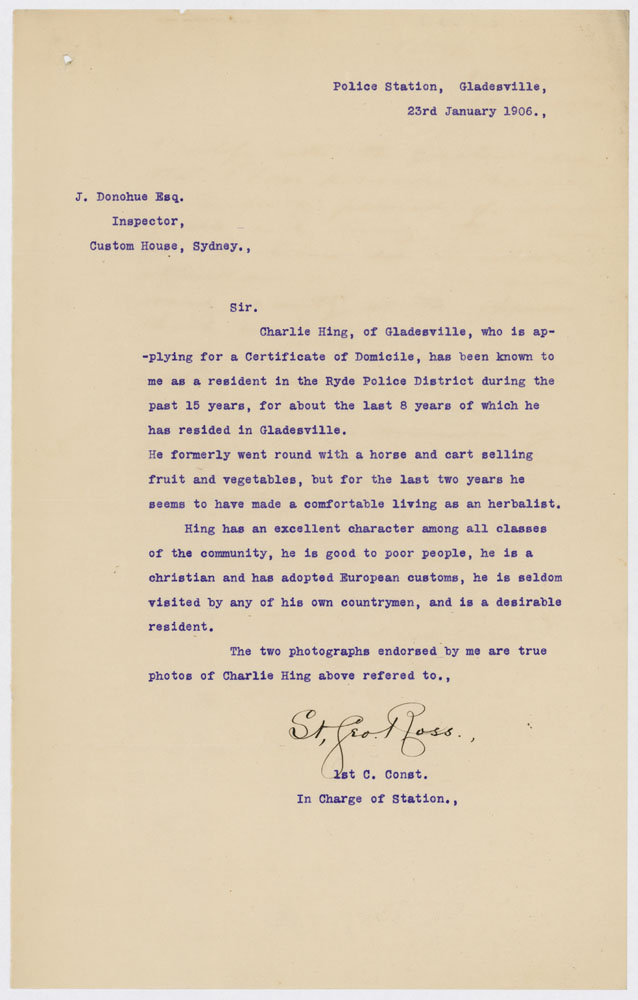
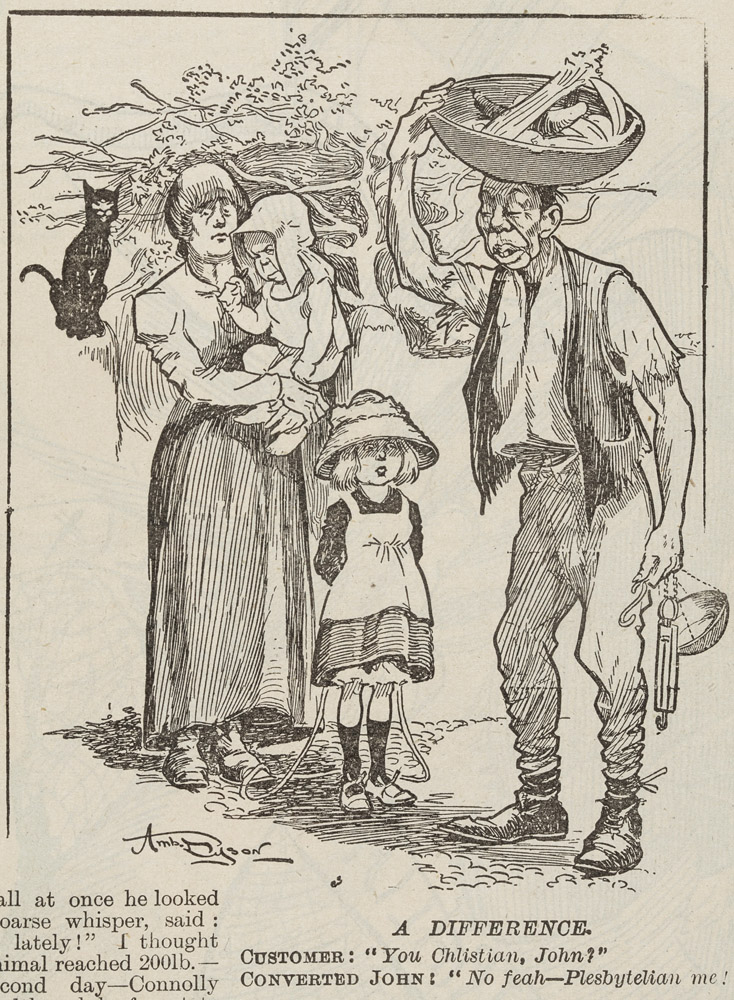
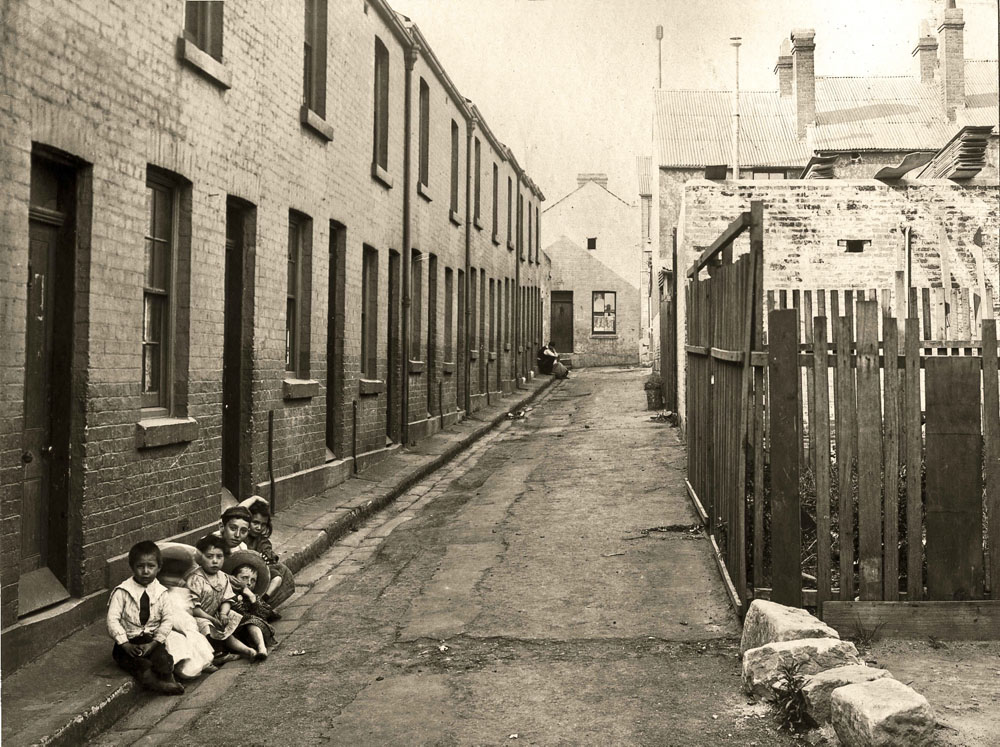
The Chinese cabinetmaking industry was in the part of Sydney most affected by the smallpox epidemics of 1881-82 and 1900. The next two photos were taken while this area was being ‘cleansed’ during the latter epidemic.
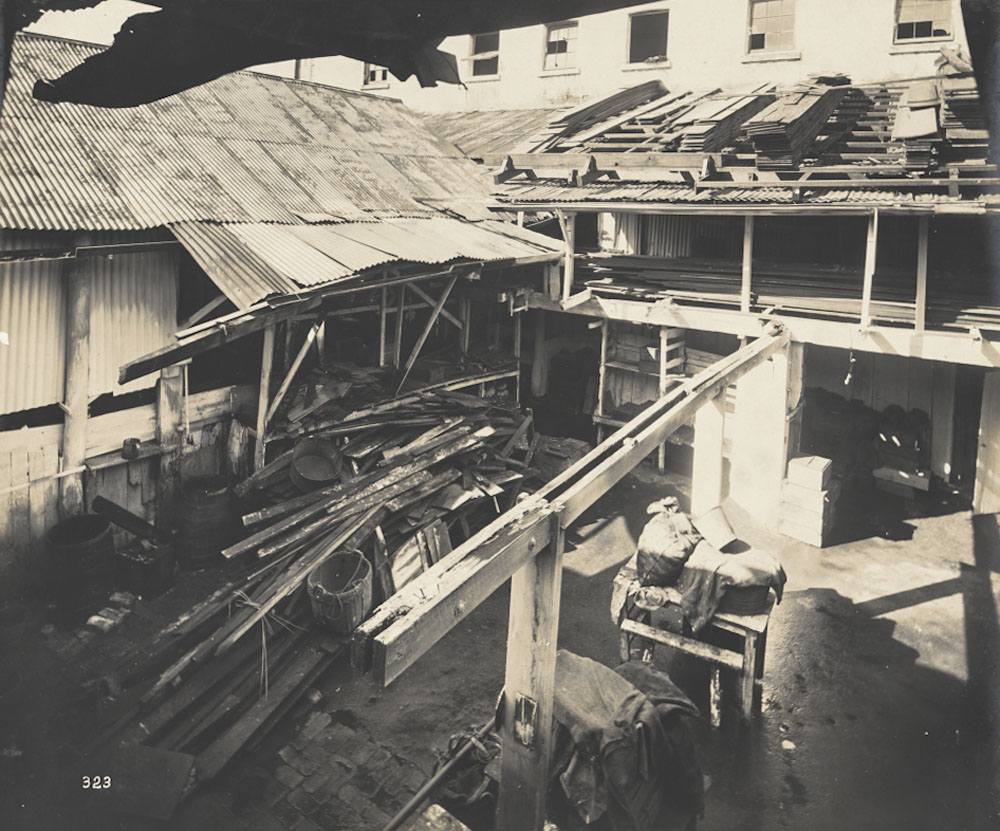
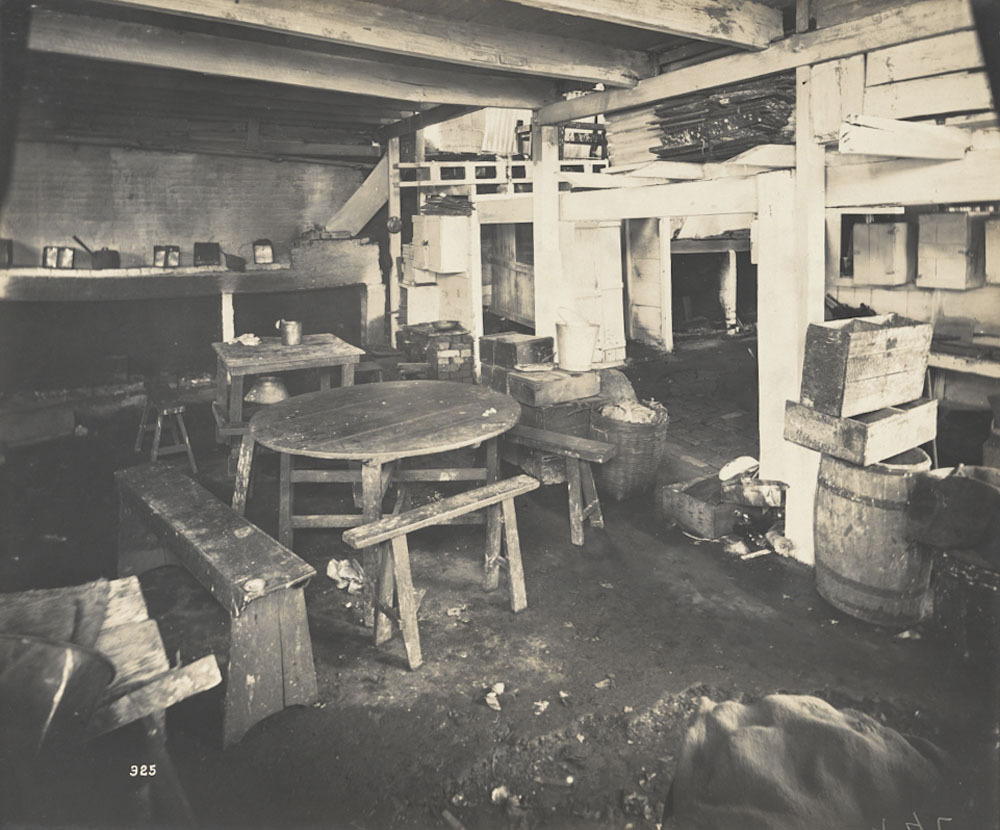
There were concerns from unions that Chinese businesses were taking jobs from ‘white Australians’ as well as ignoring other work practices.
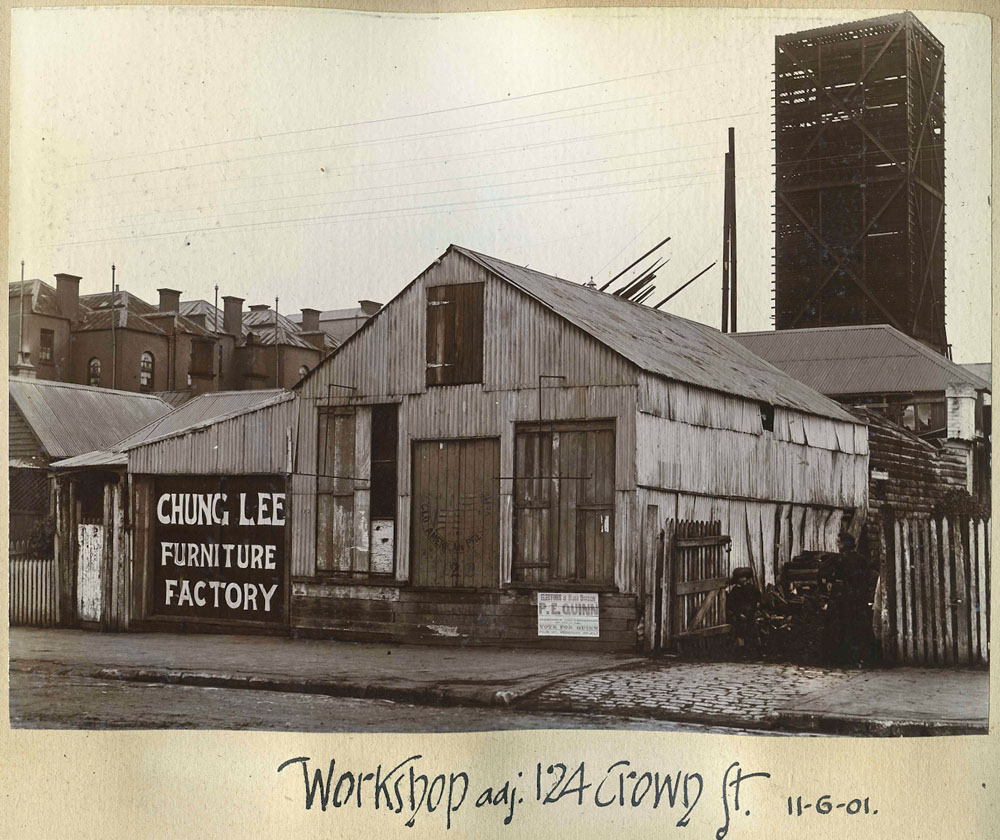
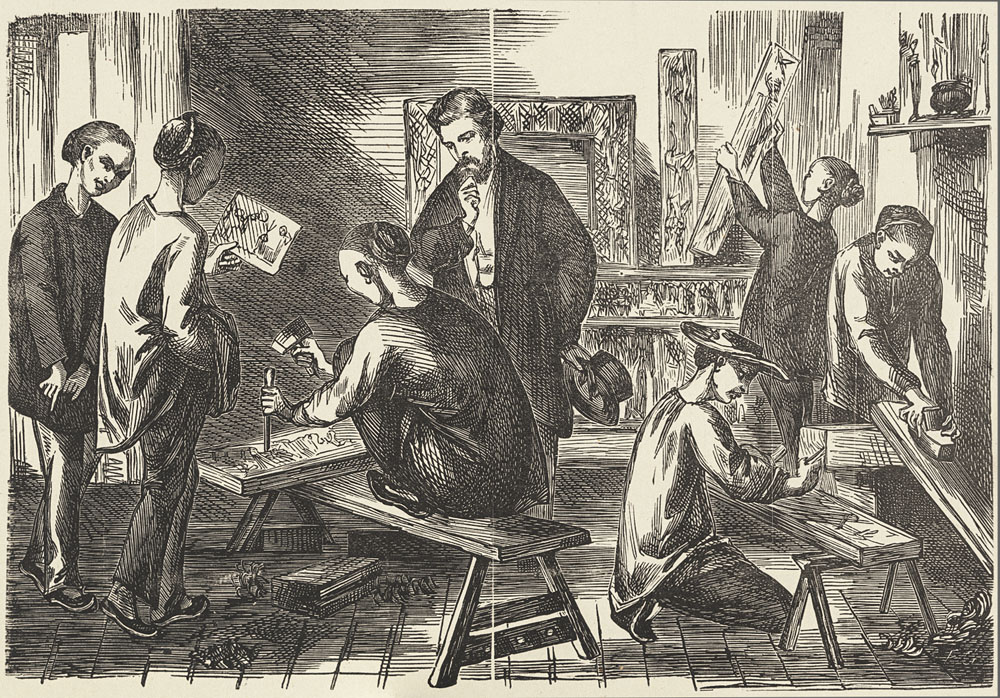
The Sydney smallpox scare of 1881-82 created a great deal of fear and suspicion.

Read the newspaper article, 'The smallpox outbreak' (.PDF 104KB) from The Bathurst Times. Was the fear of the Chinese justified when assessing the reasons for the smallpox epidemics?
The ponytail on the ghost in the next source makers it very clear who the cartoonist thought was responsible for the epidemic.
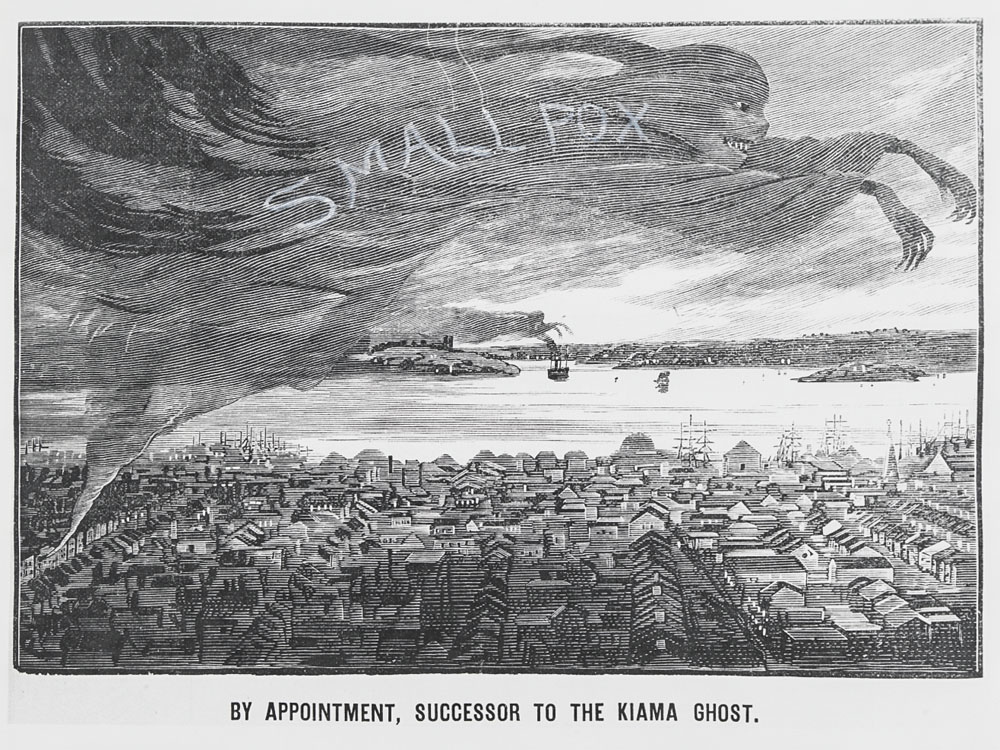
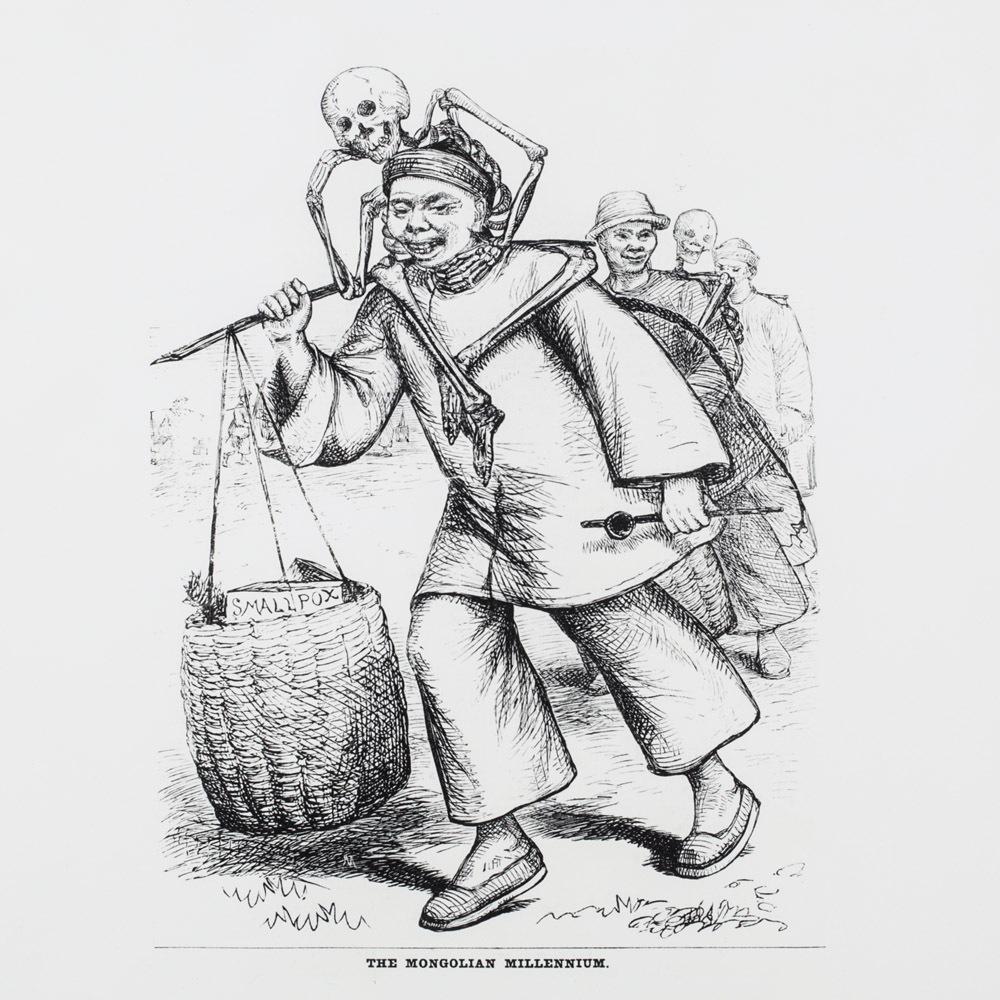

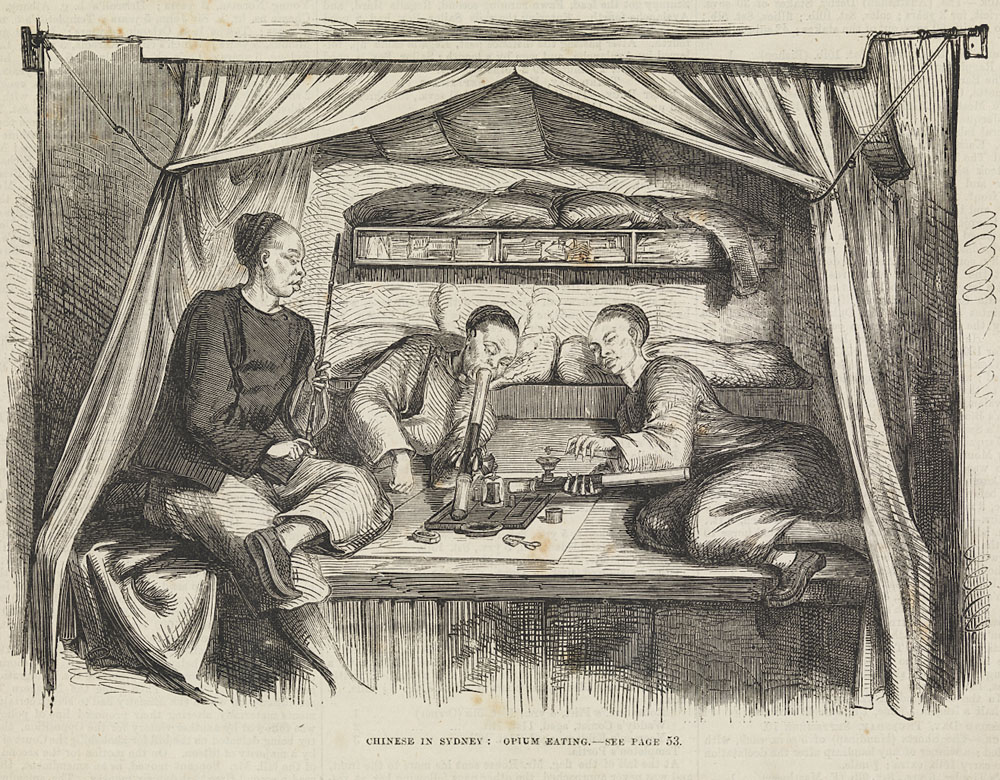
The following letter reveals the concerns in the community about the use of opium.
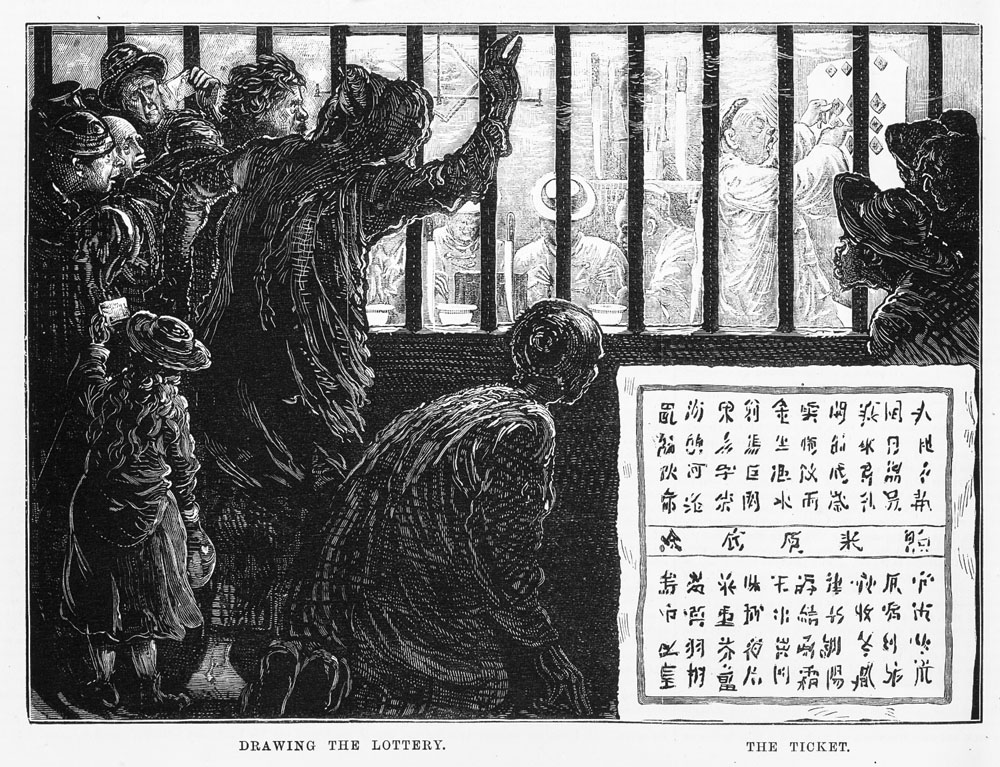
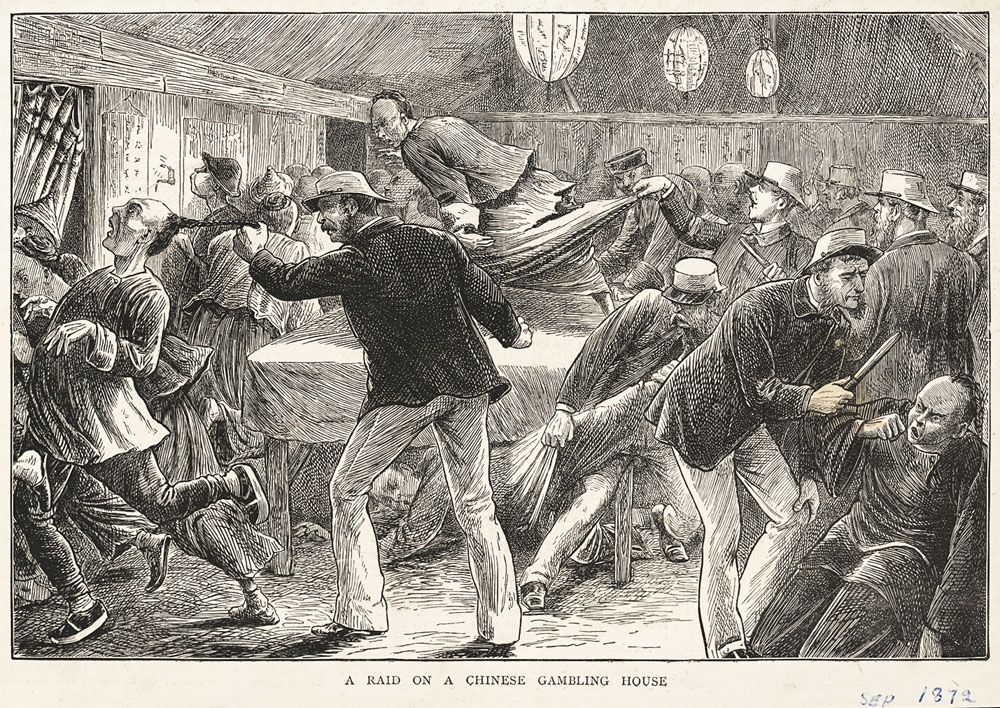
Public concerns about Chinese gambling led to a Royal Commission in the early 1890s.
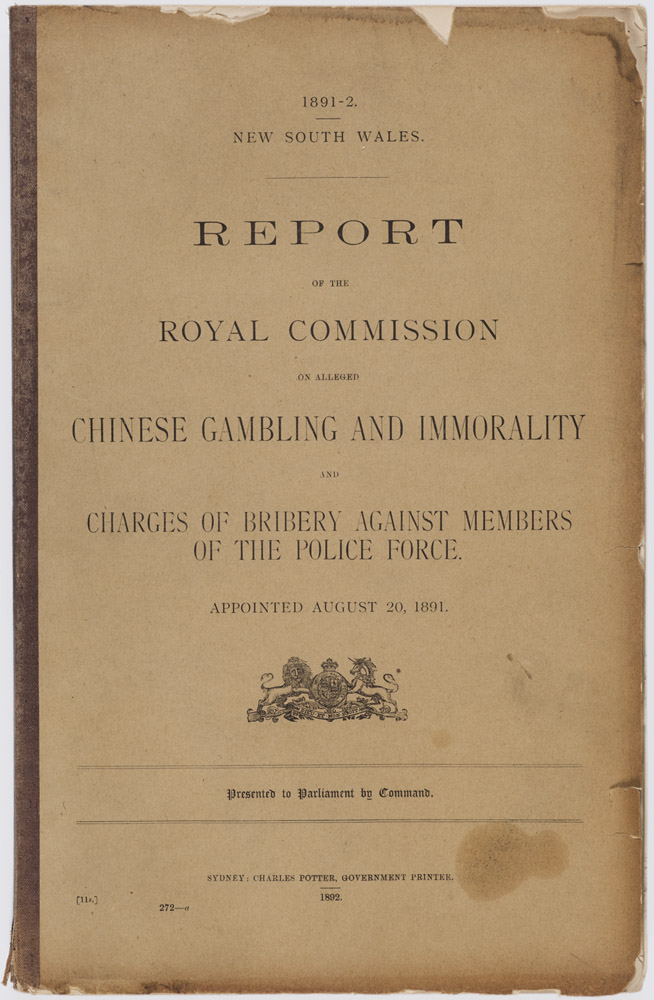
Read a summary of the Commission’s findings.
Quong Tart had come to the Colonies looking for gold but he soon diversified into other business interests. The Nom Chong family and Dr On Lee were also prominent in colonial society.

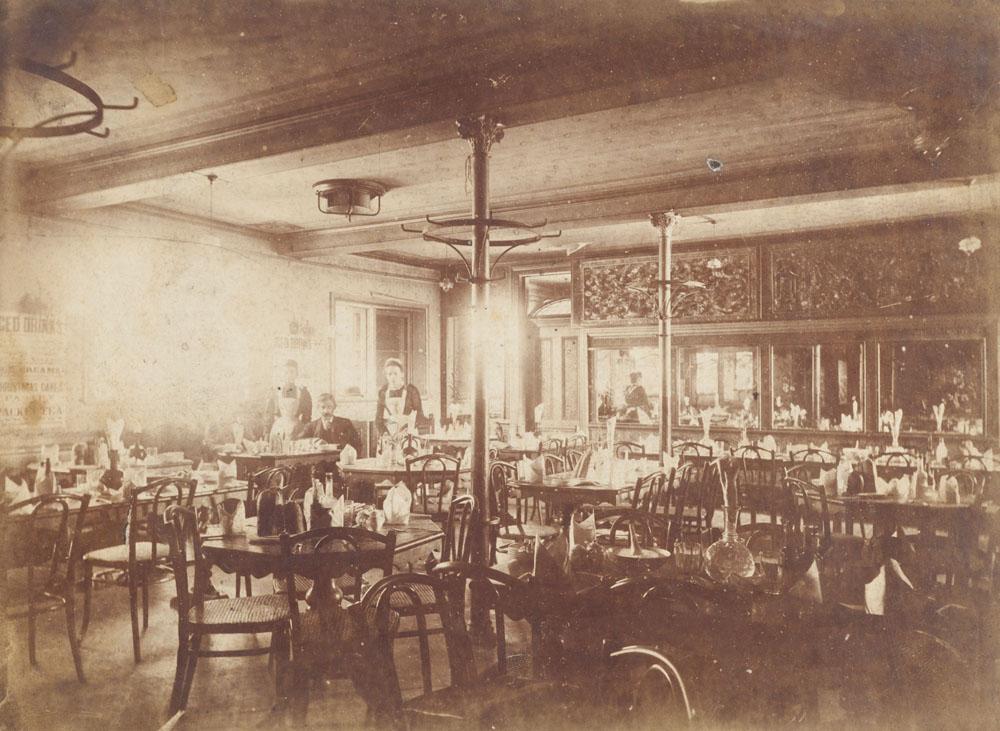
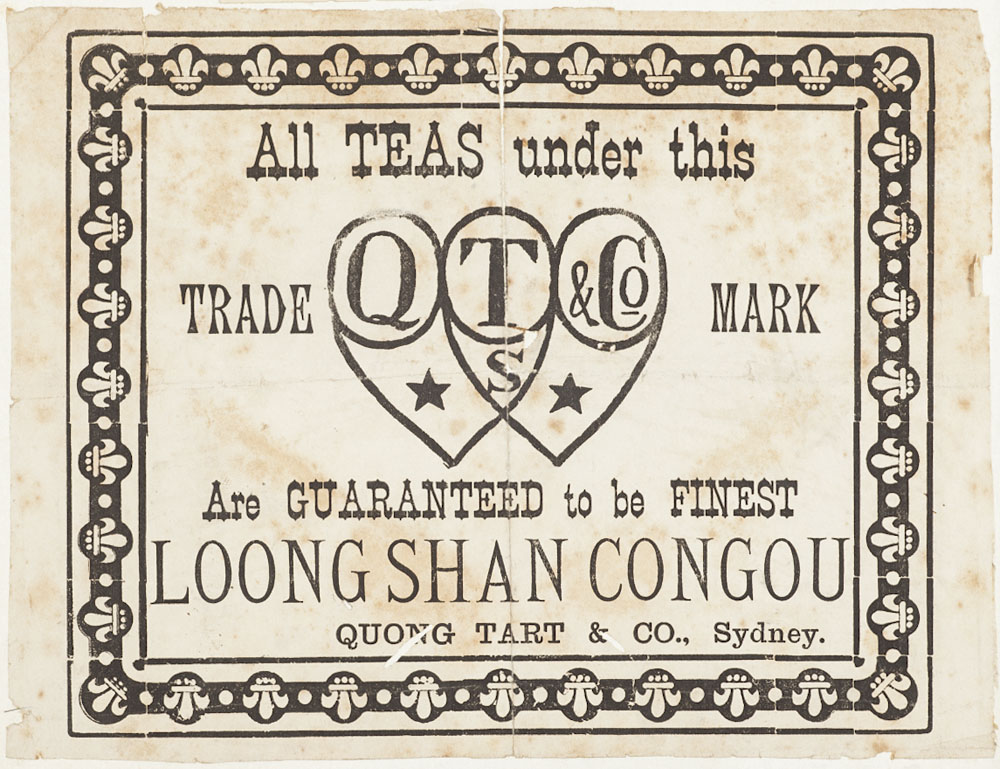
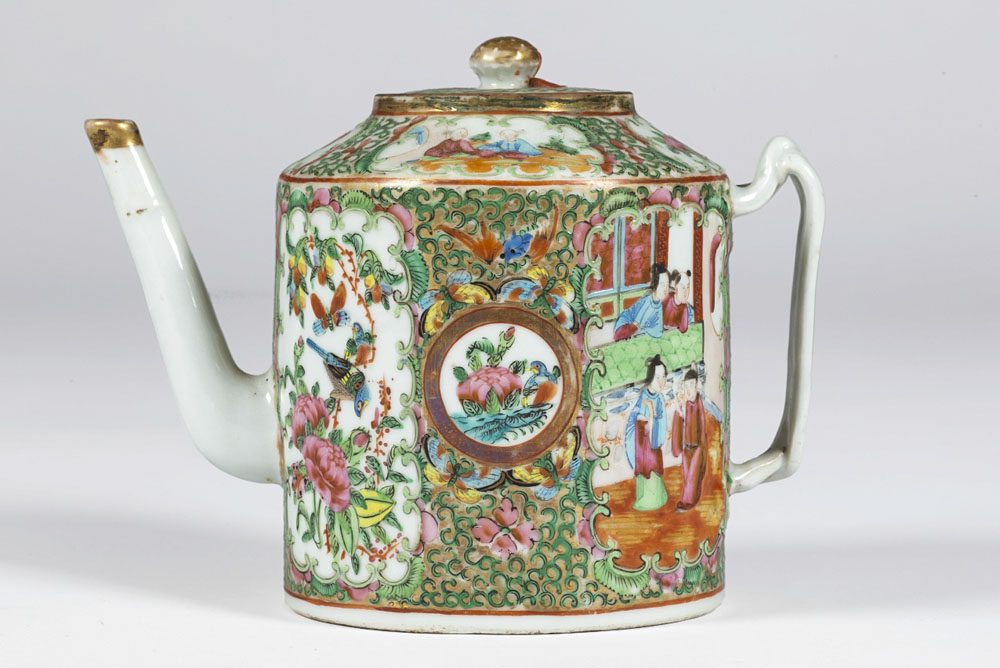
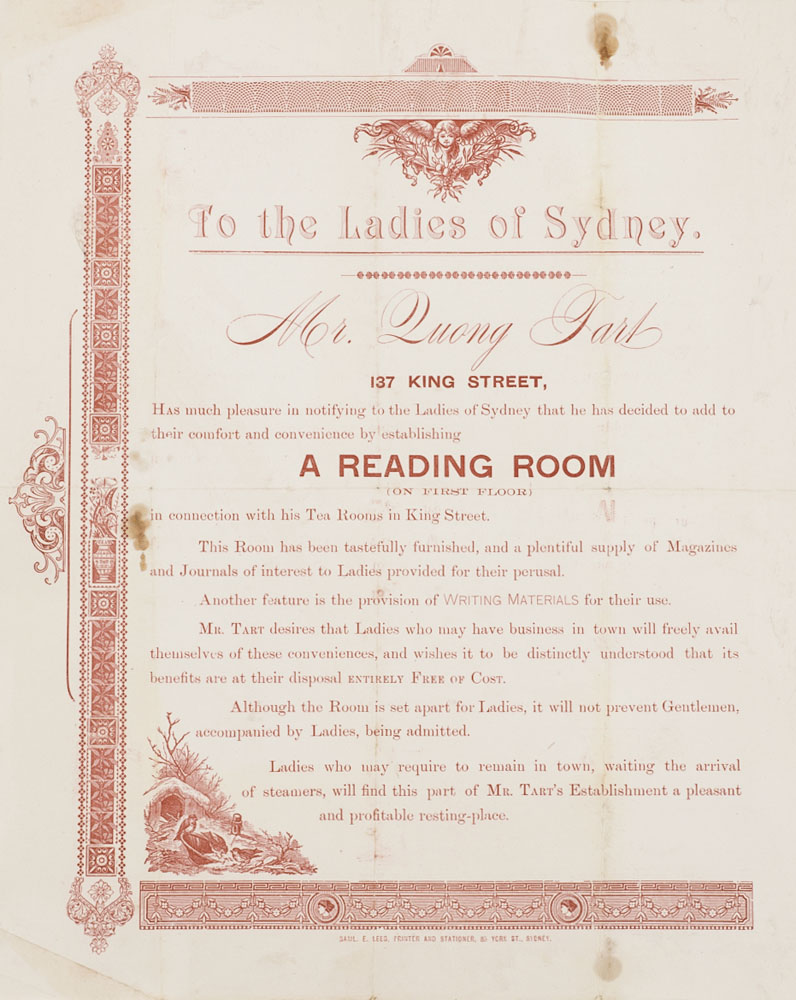
Away from his commercial interests, Quong Tart and other Chinese figures have also shown concern for the social issues of the day. For example, his tea rooms have regularly hosted meetings of the growing suffragette movement. One of his other big causes was abolishing the use of the opium drug in the colonies.

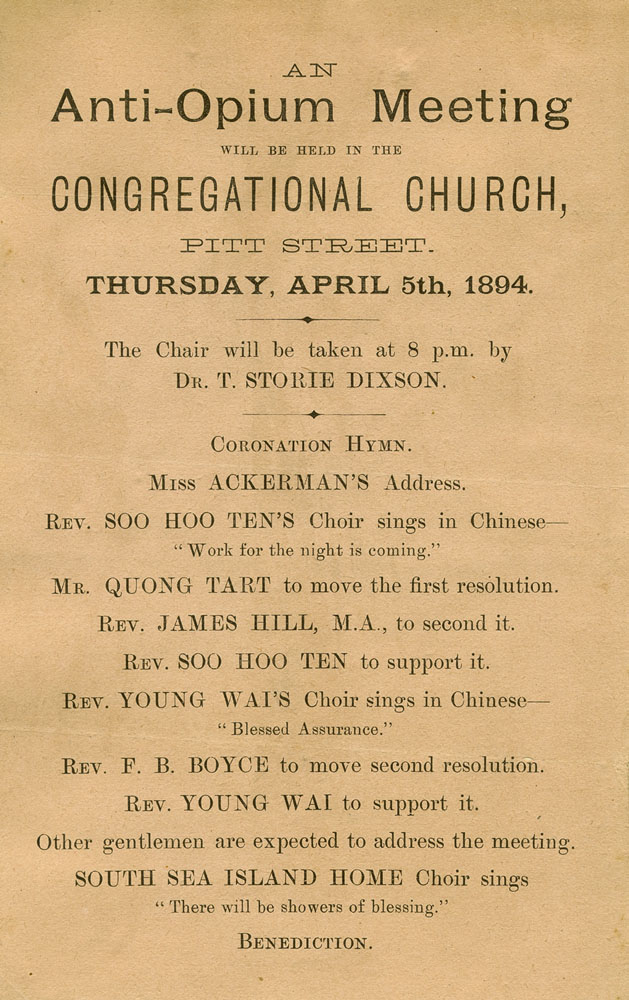
For his efforts, Quong Tart has received great praise and status in both the Chinese and Australian communities. The Chinese Emperor appointed him to the position of Mandarin in 1887.
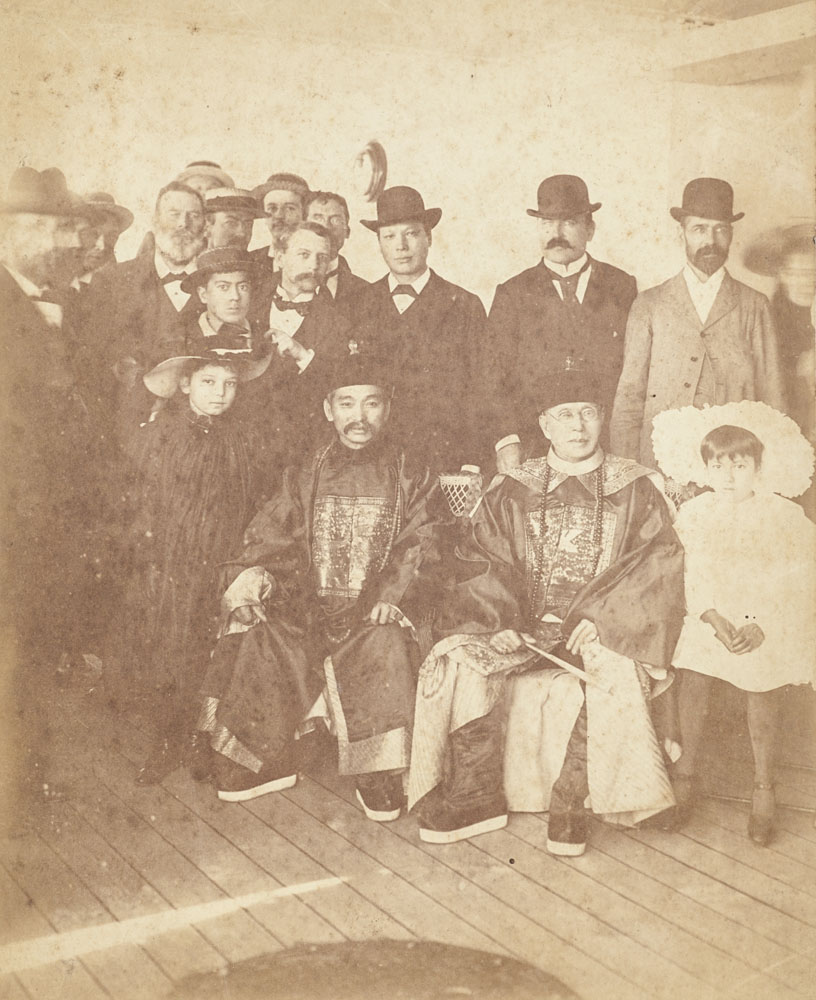

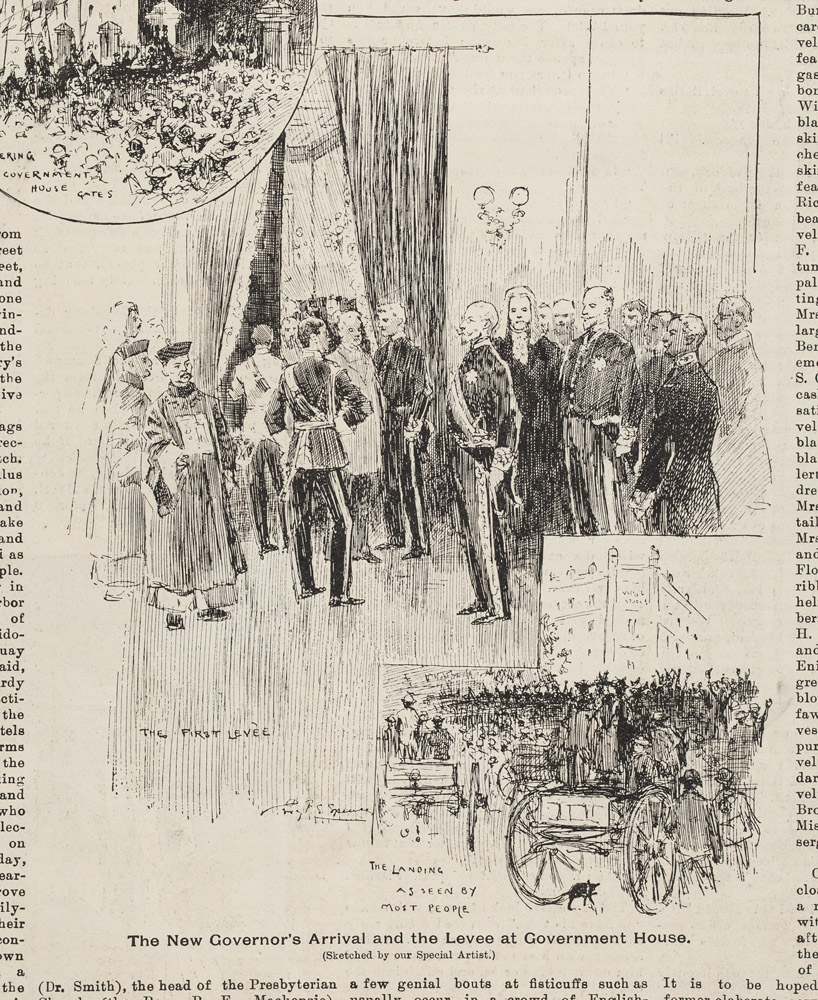
What do you notice about these photos of ‘Chinese’ families?
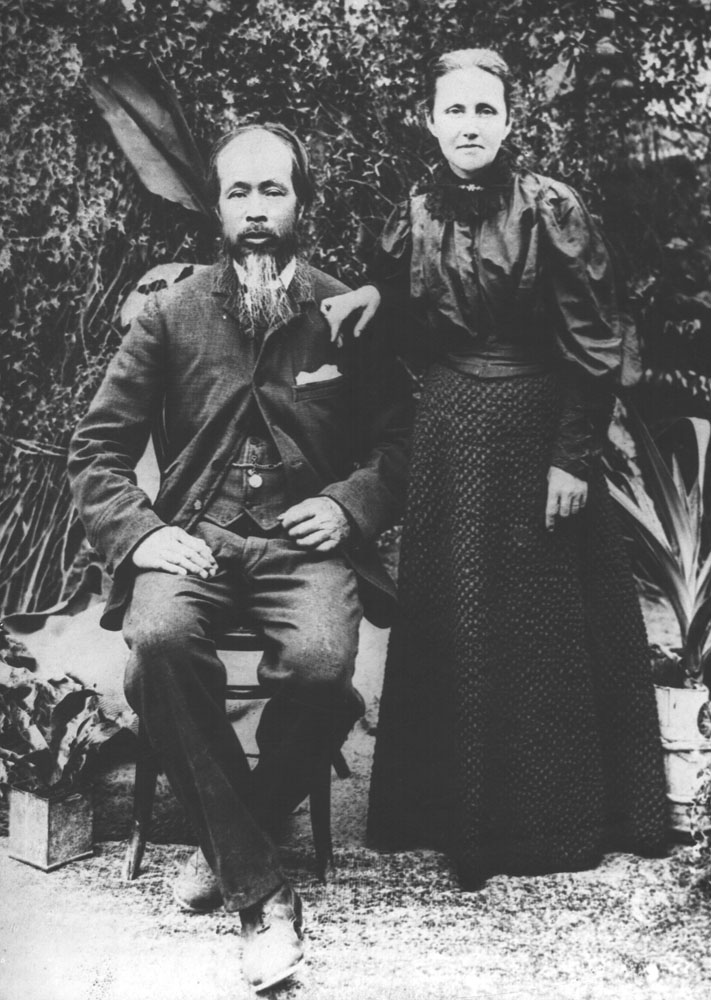
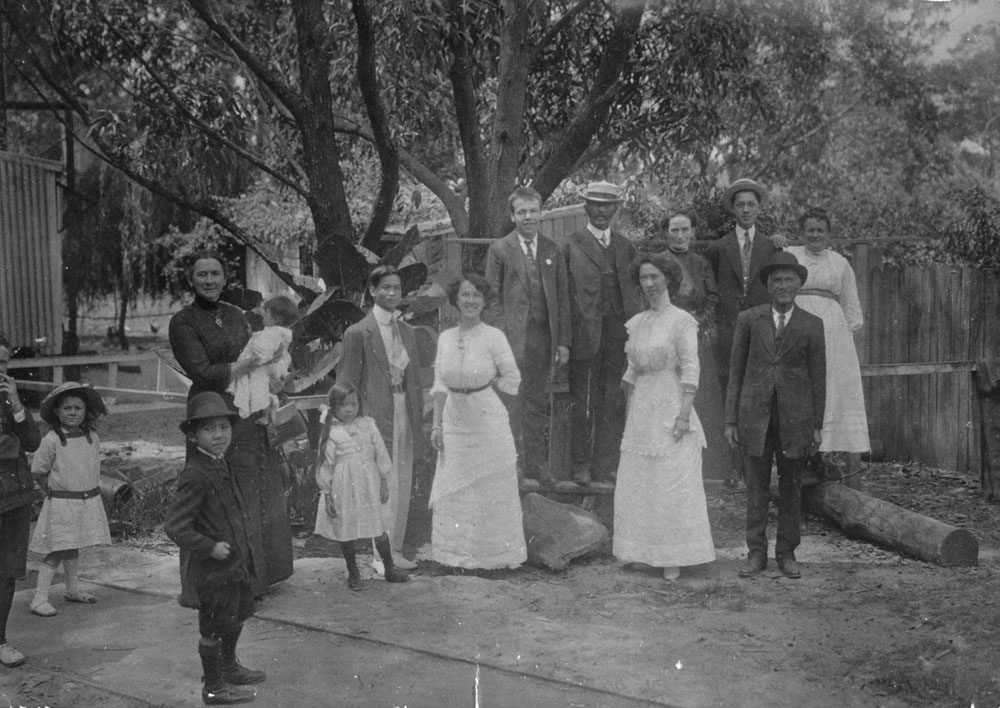
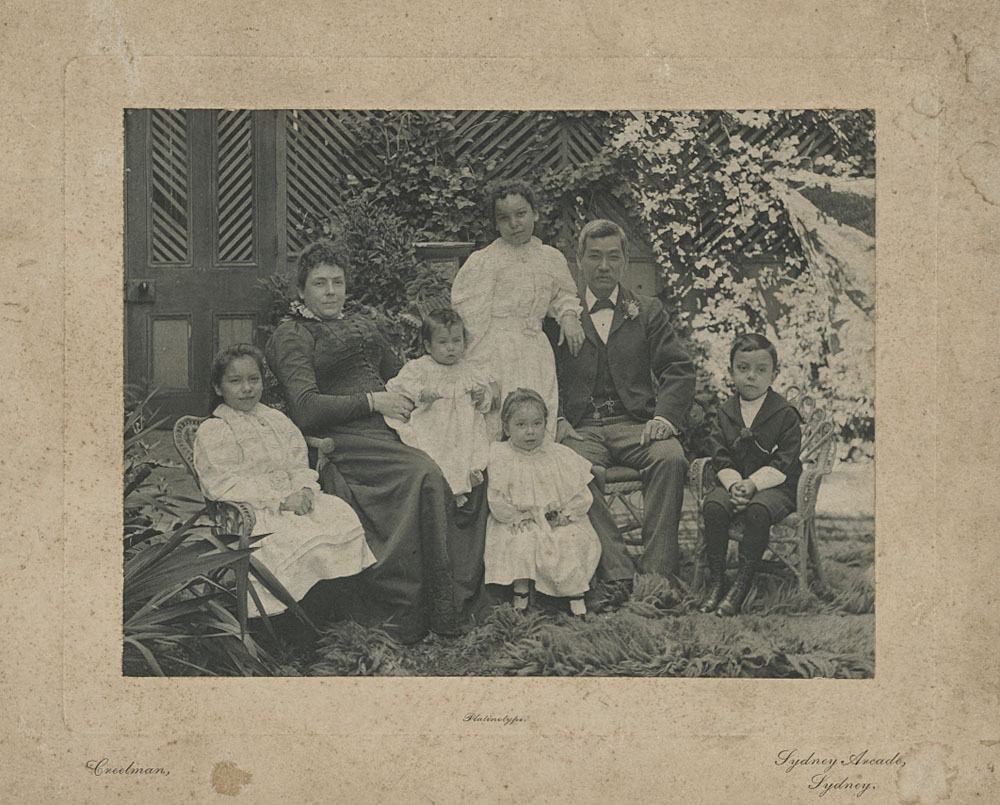
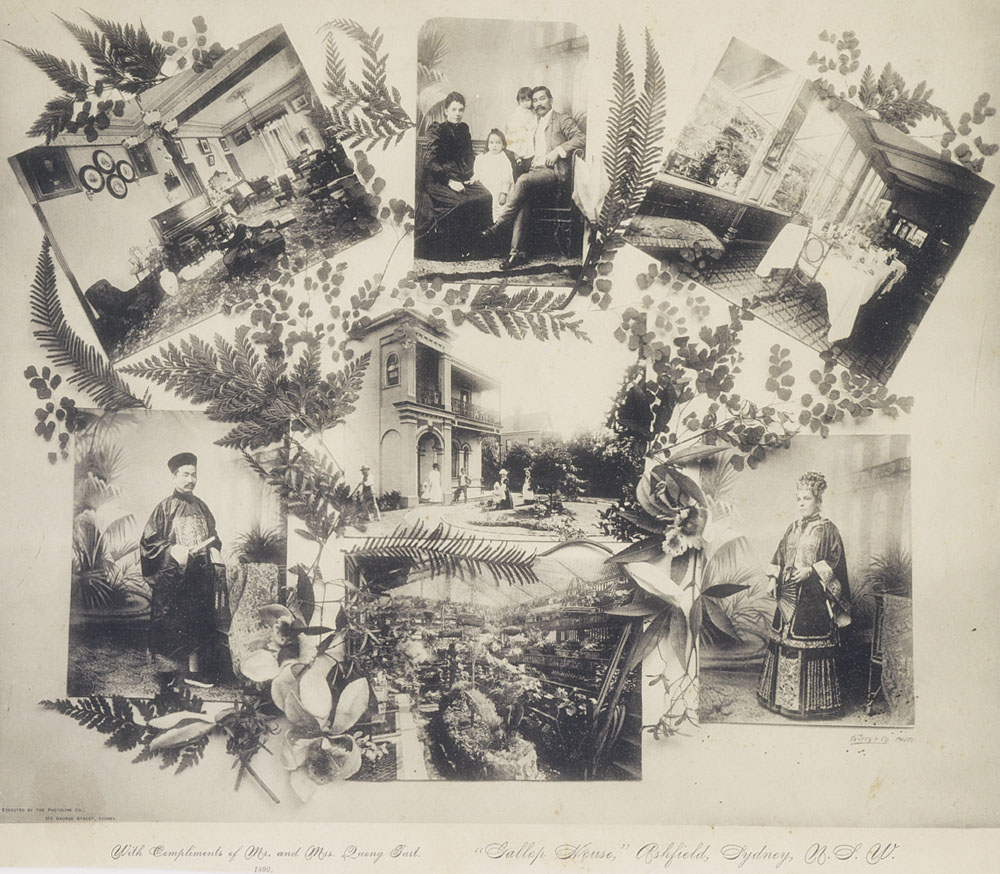
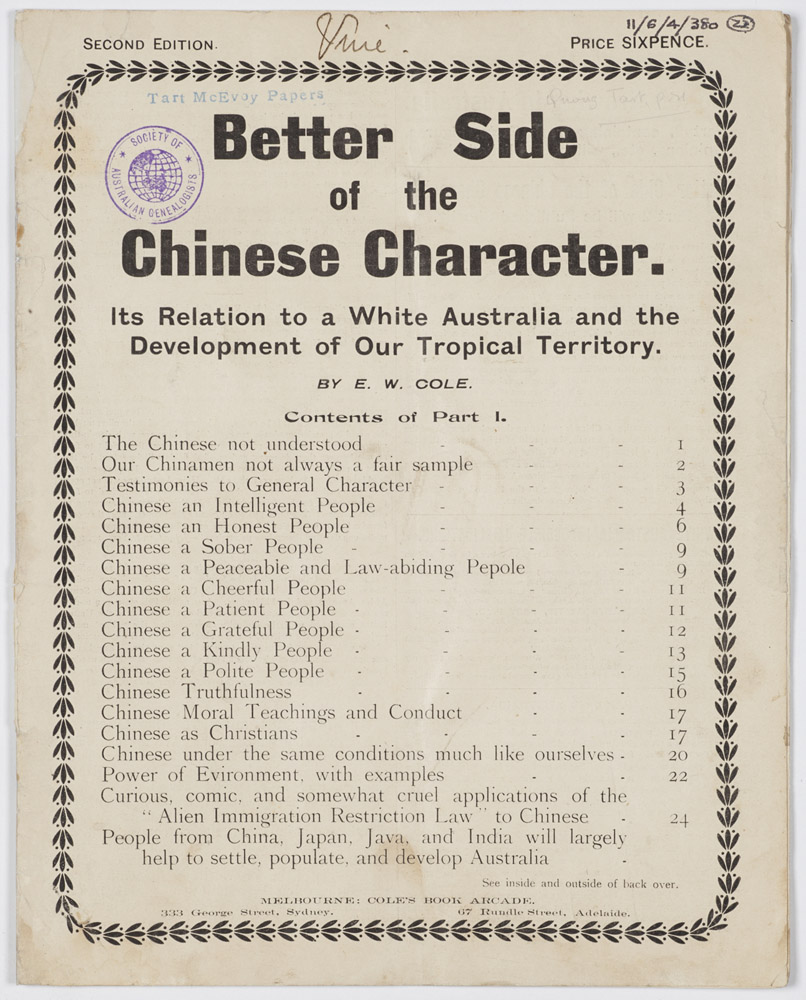
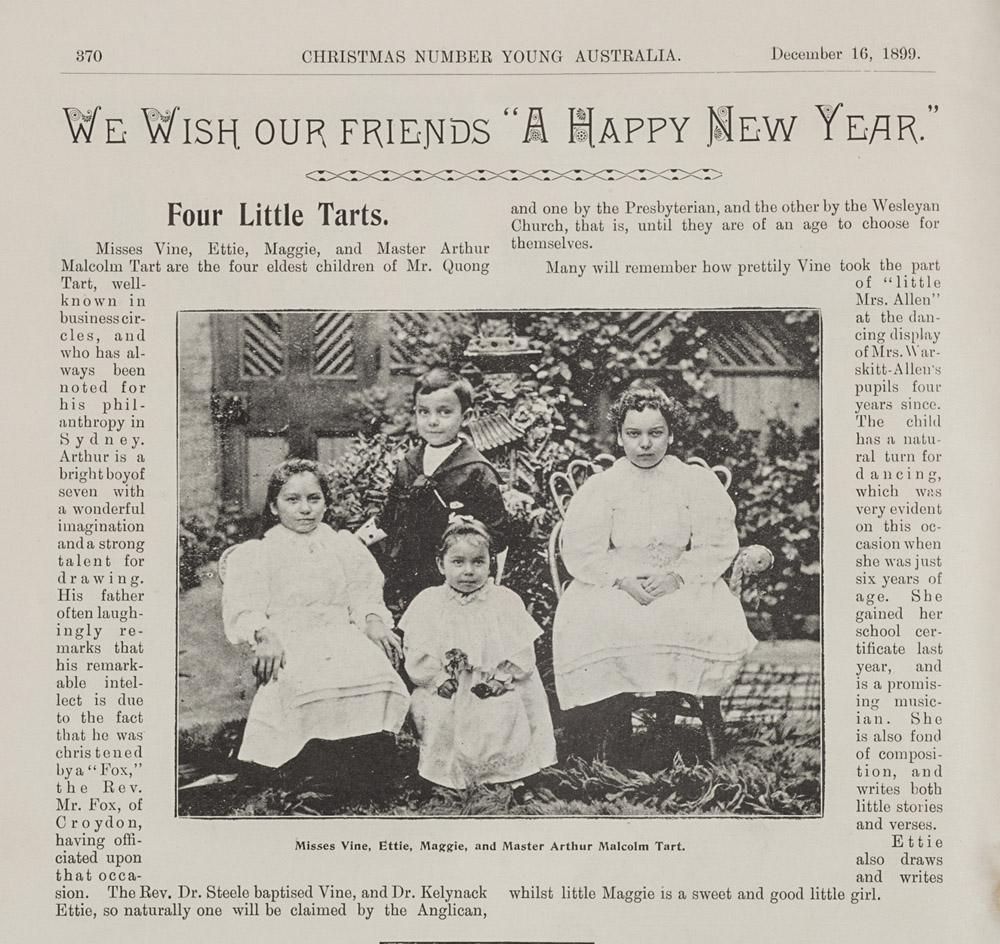
Present
It’s now time to present your research findings. Each group will be given a copy of the website template for this task. Make sure you give your group’s site a unique name (see the sample below). You will notice that the home page has been done for you.
Each group’s website is to be set out in the four sections mentioned earlier, that is:
-
Reasons for migration
-
Chinese at work
-
Criticisms of the Chinese
-
Conclusions and recommendations
Your task is to complete these four sections based on your examination and interpretation of the primary sources. Your website must make use of these sources as they are the evidence for your conclusions. As well, you should make use of different Google apps in your presentation. For example you could embed a Google Map to indicate where Chinese migrants came from.
Remember, you are assessing the value of Chinese migration to the colonies in the nineteenth century.
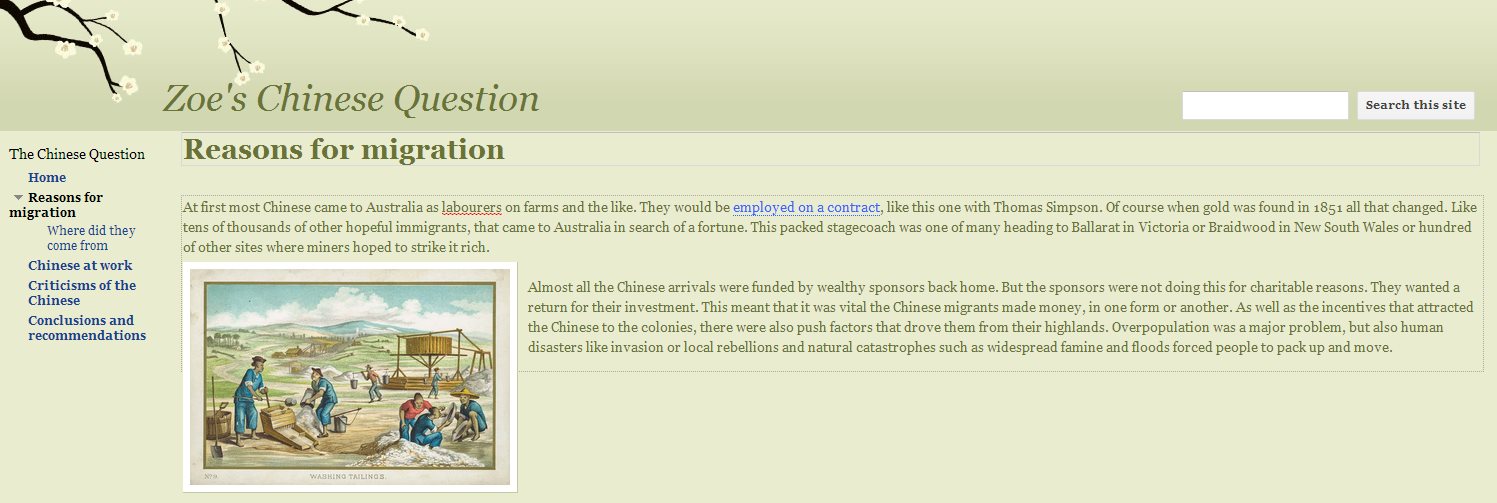
Evaluate
So what were your conclusions? How did you assess the contribution of Chinese migrants to the colonies in the nineteenth century? Compare your findings and recommendations with other groups. Was your report different, and if so, discuss why you disagreed.
At the beginning of this task, you were asked to apply a modern perspective to your assessment. How different were your opinions on Chinese migration to what actually happened in Australia in the early twentieth century? The following sources will give you a snapshot of the prevailing attitudes during this period in Australian history and the laws that these feelings produced.
As you examine these sources, ask yourself, what is the dominant message?
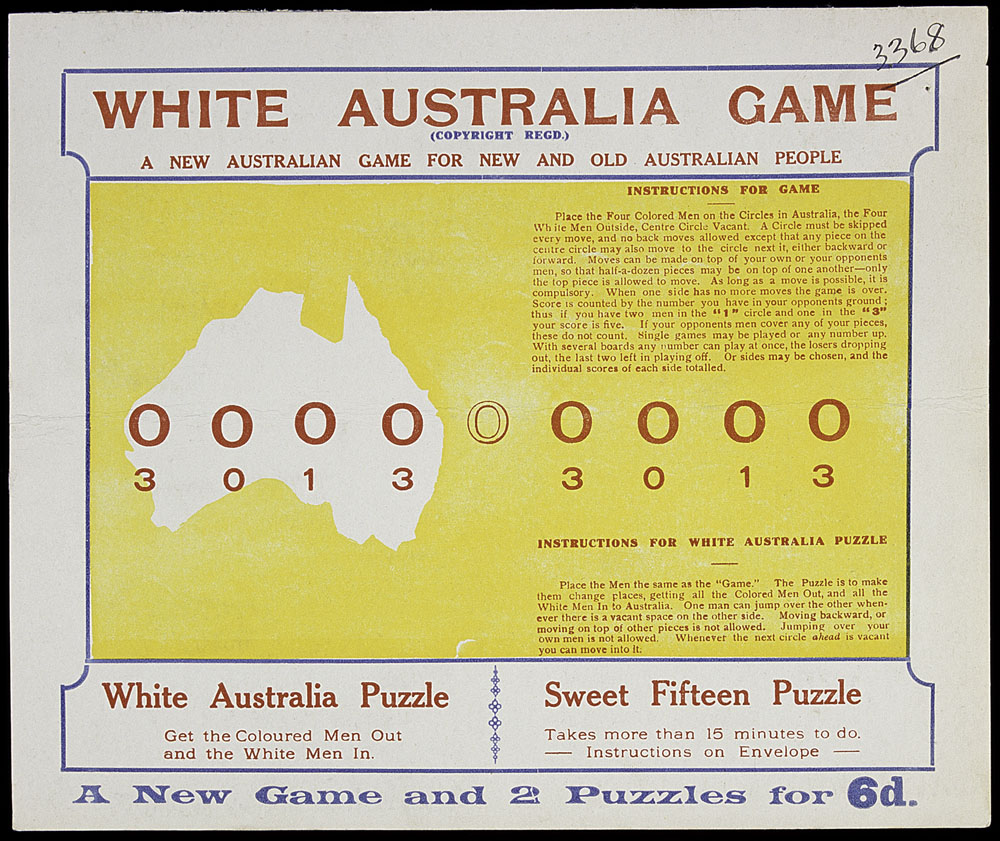
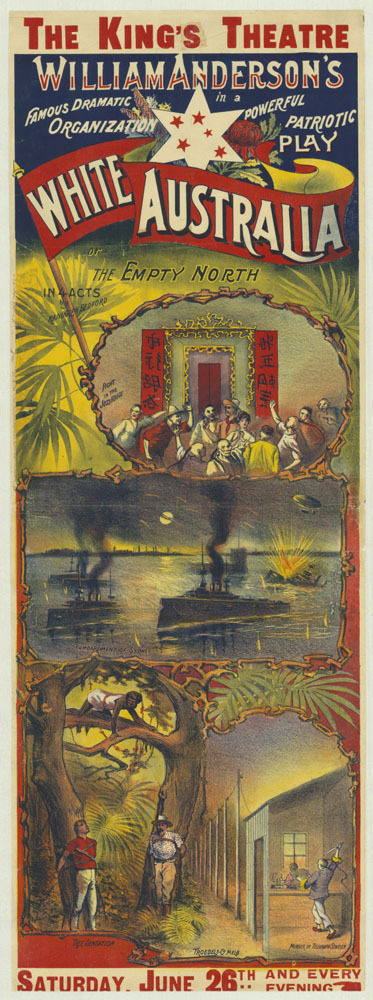
Read a review of the play from The Argus newspaper.
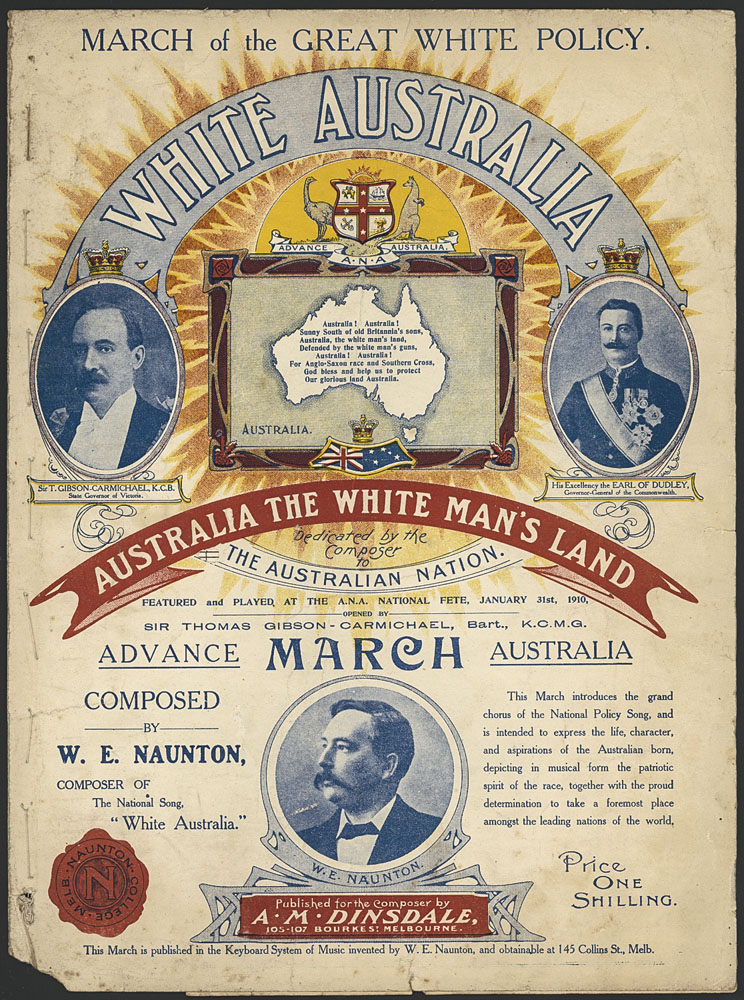
The next source is the front cover of a catalogue from the Sydney department store Anthony Horderns’. The source after that comes from within the catalogue.
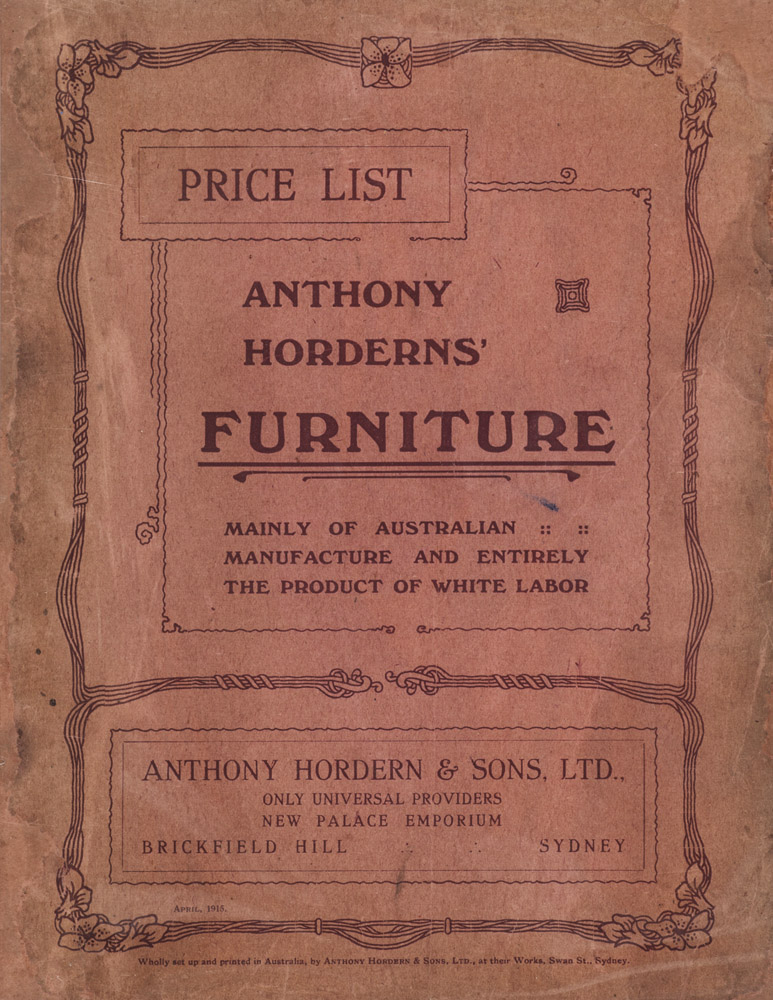
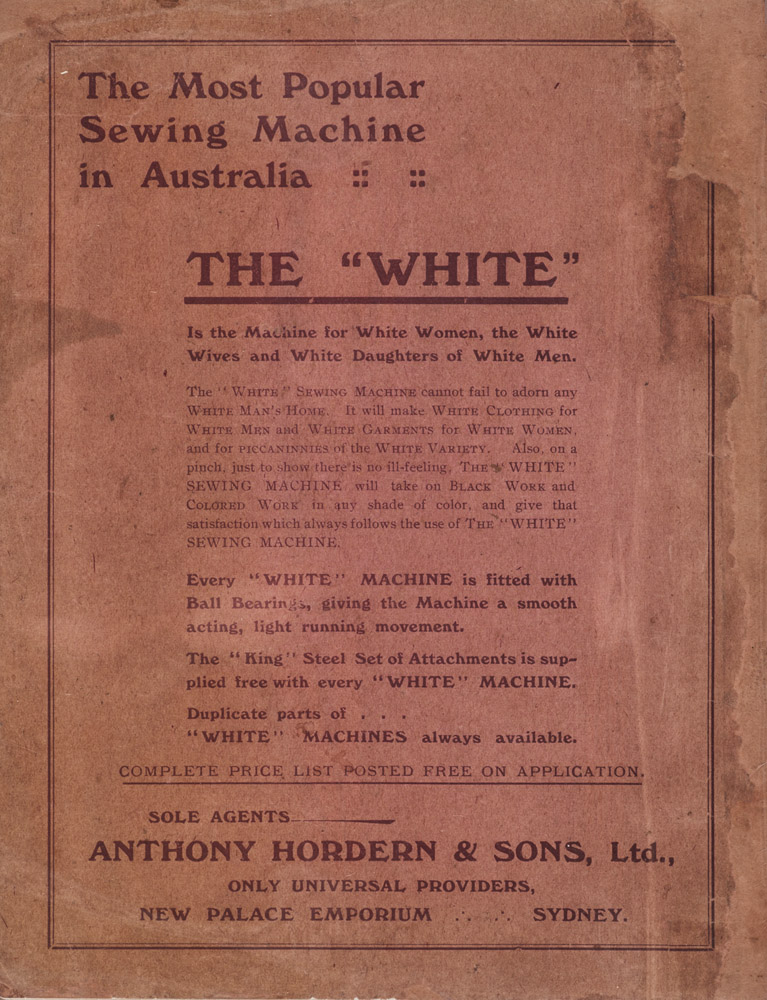
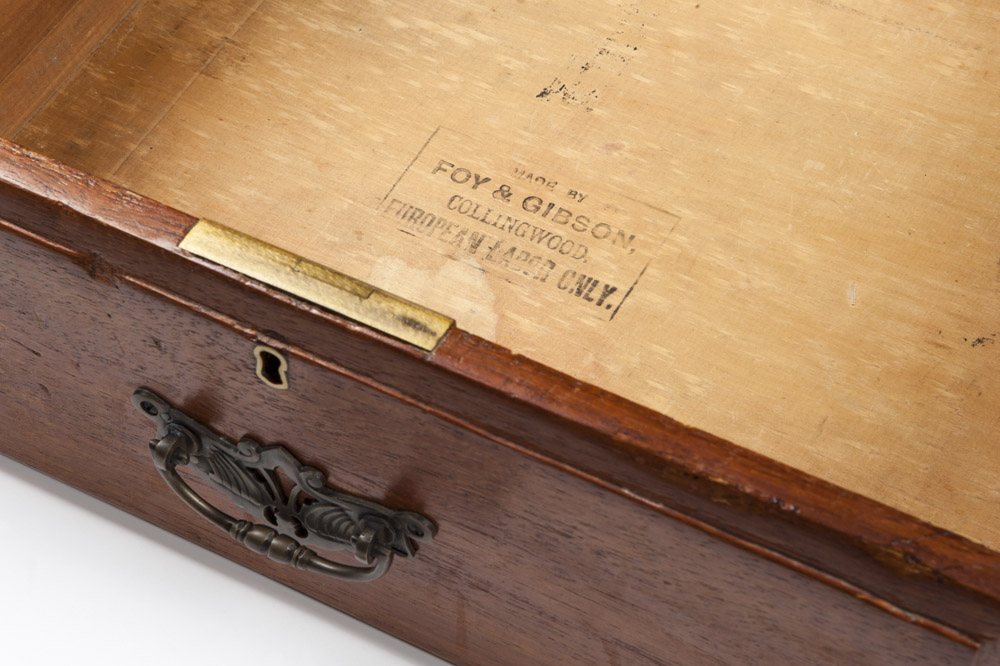
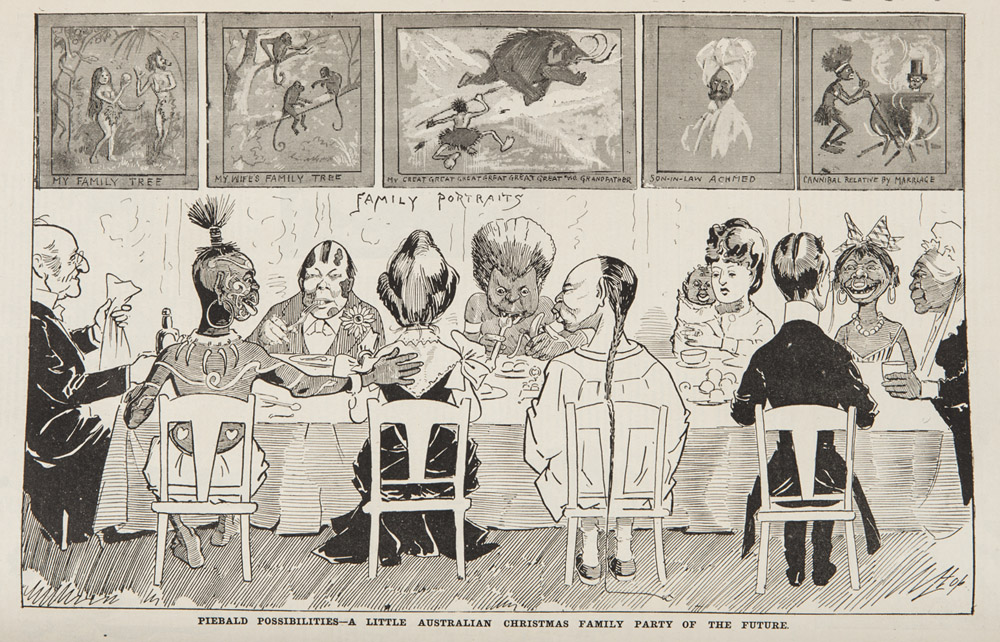
In the nineteenth century, most of the colonies introduced laws restricting the flow of Chinese migrants to Australia, starting with Victoria in 1855. In 1881 a tax on arrivals from China also slowed down the numbers. One of the first priorities after Federation in 1901 was to bring in similar legislation for the newly formed nation of Australia. The consequence was the Immigration Restriction Bill, which became known as the White Australia Policy.
A key feature of the White Australia Policy was the Dictation Test, which could be given in any language. Find out more about the Test and see if you can pass, and read some sample passages.
Teaching notes
This resource is designed to support student centred project based collaborative learning that utilises Google G Suite for Education and other online tools.

Note: if you or your students do not have a Google account, it’s easy to sign up.
The resource supports students in Stage 5 NSW Syllabus for the Australian Curriculum History K-10.
A student:
-
explains and assesses the historical forces and factors that shaped the modern world and Australia HT5-1
-
sequences and explains the significant patterns of continuity and change in the development of the modern world and Australia HT5-2
-
explains and analyses the motives and actions of past individuals and groups in the historical contexts that shaped the modern world and Australia HT5-3
-
explains and analyses the causes and effects of events and developments in the modern world and Australia HT5-4
-
identifies and evaluates the usefulness of sources in the historical inquiry process HT5-5
-
uses relevant evidence from sources to support historical narratives, explanations and analyses of the modern world and Australia HT5-6
-
explains different contexts, perspectives and interpretations of the modern world and Australia HT5-7
-
selects and uses appropriate oral, written, visual and digital forms to communicate effectively about the past for different audiences HT5-10
The experiences of non-Europeans in Australia prior to the 1900s (such as the Japanese, Chinese, South Sea Islanders, Afghans) (ACDSEH089)
A student:
-
explains why ONE of the non-European groups came to Australia
-
describes how the chosen group lived and worked in Australia
-
describes the contribution of non-European workers to Australia's development to 1900.
Living and working conditions in Australia around the turn of the twentieth century (that is 1900) (ACDSEH090)
A student:
-
uses a range of sources, to investigate the living and working conditions of men, women and children around the turn of the twentieth century in Australia.
Legislation 1901–1914, including the Harvester Judgment, pensions, and the Immigration Restriction Act (ACDSEH092)
A student:
-
identifies key features of the Harvester Judgment, pensions legislation and the Immigration Restriction Act and discusses what they reveal about the kind of society the Australian government aimed to create.
This unit has the students role-playing a 1901 committee (i.e. prior to the White Australia Policy). Their task is to complete a report (in the form of a website) that examines the impact of Chinese migration to Australia in the nineteenth century. Unlike many Australians living in 1901, they are to base their conclusions on the evidence provided, ignoring the often-hysterical and/or racist opinions of the time, i.e. apply a modern perspective.
-
Get organised
-
Divide the class into groups of three or four students. Instruct each group to set up a Google document with these sub-headings:
-
Reasons for migration
-
Chinese at work
-
Criticisms of the Chinese
-
Conclusions and recommendations
-
-
Students may need guidance on how to structure and work effectively in groups. They need to:
-
understand why they are working in small groups
-
establish the roles of individuals within their group
-
engage in collaborative processes and workflows.
-
-
Divide the primary sources in the ‘investigate’ section between the students in each group and all are to make notes in their Google document. Set a time limit, say, three 40-minute periods plus homework.
-
Assign roles for each member of the group, for example:
-
Main writer: student to refer to the notes and write most, or all of the online content
-
Google sites expert: student to familiarise him/herself with how the Google sites template works, be responsible for site design and advise other group members. A series of helpful tutorials can be found here.
-
Graphic designer: student to choose all the appropriate images/ primary sources to be used as well as accurately sourcing and acknowledging all items used, and ensuring that the writer refers to these items
* All team members should consult with each other as roles will overlap.
-
-
Additional roles:
-
Second writer
-
Editor
-
-
-
Investigate
-
There are six themes (indicated by tabs) in the ‘investigate’ section. These are:
-
Goldminers
-
(Market) gardeners
-
Cabinetmakers
-
Neighbours, i.e. the use of opium, gambling and smallpox
-
Merchants, including a number of sources relating to Quong Tart
-
Families.
-
-
Divide the six themes between the students in each group. Instruct them to set up a Google doc in which they will make their notes.
-
-
Present
-
Each group’s website is to be set out in the four sections mentioned above, i.e.
-
Reasons for migration
-
Chinese at work
-
Criticisms of the Chinese
-
Conclusions and recommendations
-
-
Teachers must first make copies of the general template for their student groups.
-
Student groups create their own website (giving it a distinctive name) starting with the template version given to them by their teacher. The home page is already created for them from the general template. Each group’s task is then to add content to the rest of the side navigation items which are initially blank.
-

-
Students are encouraged to use other Google apps and must include images from the themes to support their websites.

Some examples of using Google Apps:
-
Share documents on Google Docs with group members and edit them together in real time. For example, a journal of work that has been completed, self-evaluations and reflections.
-
Use Google Maps to indicate where Chinese migrants came from.
-
Use Google Forms to create an online survey to send to research participants and use Flubaroo to automatically return your results in a Google Spreadsheet.
-
Contribute to a Google Site (set up by a teacher).
-
Seek advice and information from Google Contacts.
-
Create work plans and track project achievements and milestones using Google Calendar.
-
Save and tag websites using Google Bookmarks.
-
Use Google Docs to write on a reading.
-
Evaluate
-
Students judge the websites of other groups as well as a teacher assessment. Teachers can make comments at any stage of the task in the ‘comments’ field of each page.
-
Students are also provided with sources from ‘Exiles and ancestors’ showing what actually happened.
-
As a follow up exercise, teachers might like to discuss comparisons/contrasts with other issues such as:
-
why were Quong Tart and the Nomchongs regarded so differently to most other Chinese migrants in the nineteenth century
-
legitimacy of asylum seeker claims today
-
is there xenophobia in modern Australian society
-
nineteenth century Chinese versus twenty-first century Middle East refugees/migrants
-
compare the experiences of the Chinese with the treatment of other migrant groups in Australia in the nineteenth and twentieth centuries, for example, Greeks and Italians in the 1950s and Vietnamese in the 1970s.
-
-
The Teacher's Toolkit wensite suggests some peer and self assessment strategies.
-
Personal and social capability
-
Students develop personal and social competence as they learn to understand and manage themselves, their relationships and their lives more effectively.
-
This includes establishing positive relationships, making responsible decisions, working effectively in teams, and understanding and handling challenging situations constructively, including interacting confidently and with empathy in social situations and functioning within the 'real world'.
-
Allows students to assess and adapt their individual and collaborative skills for learning with increasing independence and effectiveness.
Information and communication technology capability
-
Students use ICT effectively and appropriately when investigating, creating and communicating ideas and information, while problem solving and working collaboratively.
-
Students learn to access information, collect, analyse and represent data, model and interpret concepts and relationships, and communicate ideas, processes and information.
Work and enterprise
-
Students develop work-related knowledge, skills and understanding through a variety of experiences and develop values and attitudes about work environments including working in groups, oral and written skills, finance, safe work conditions, and rights and responsibilities in the workplace.